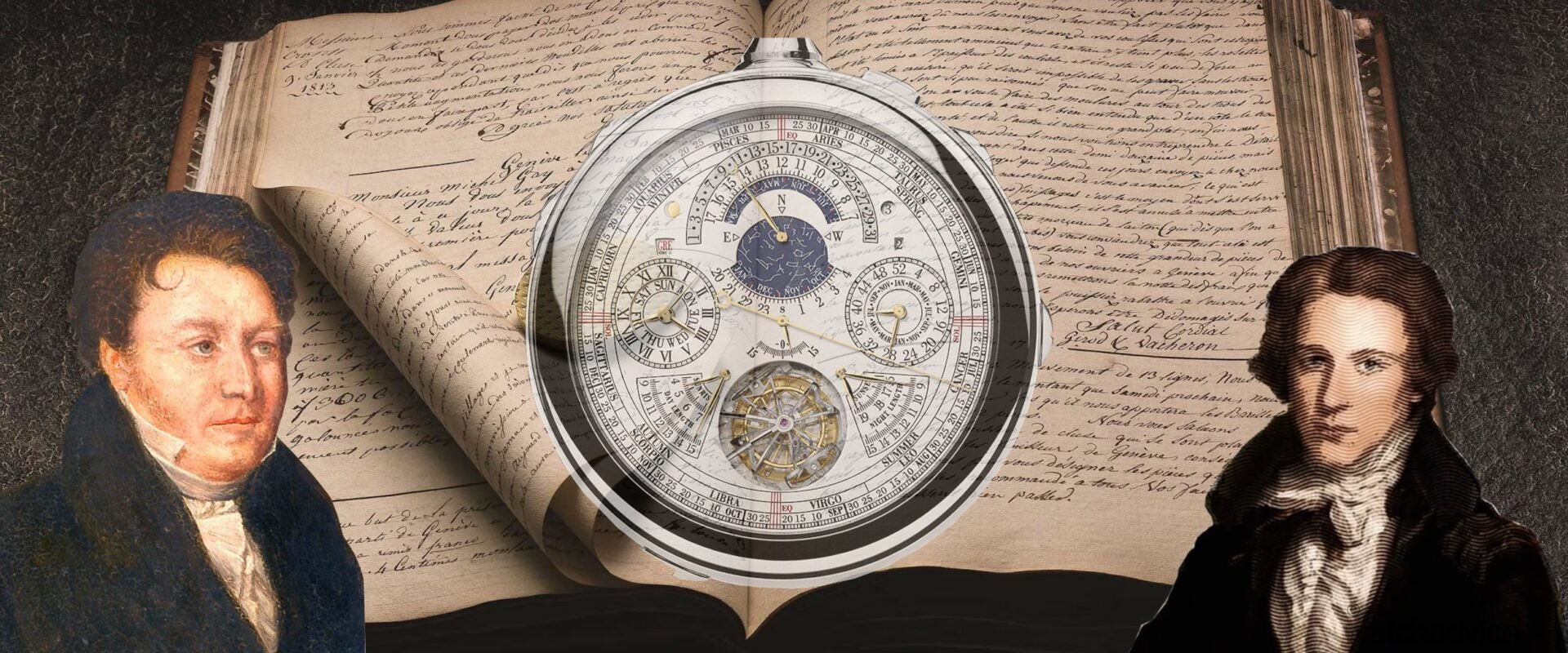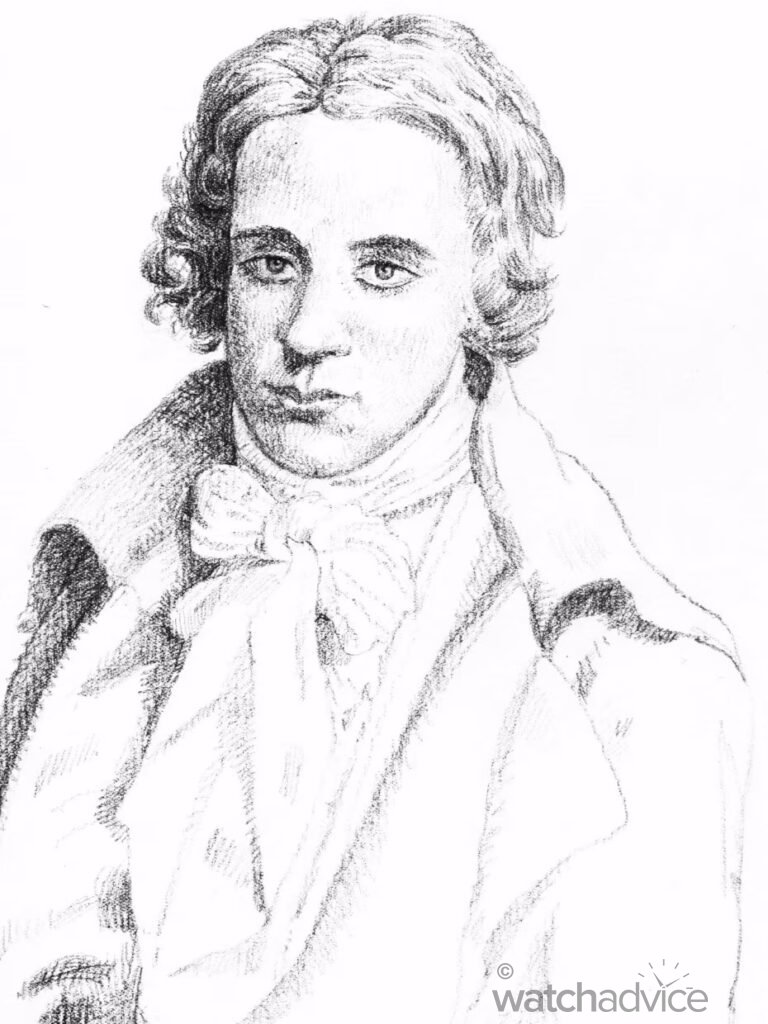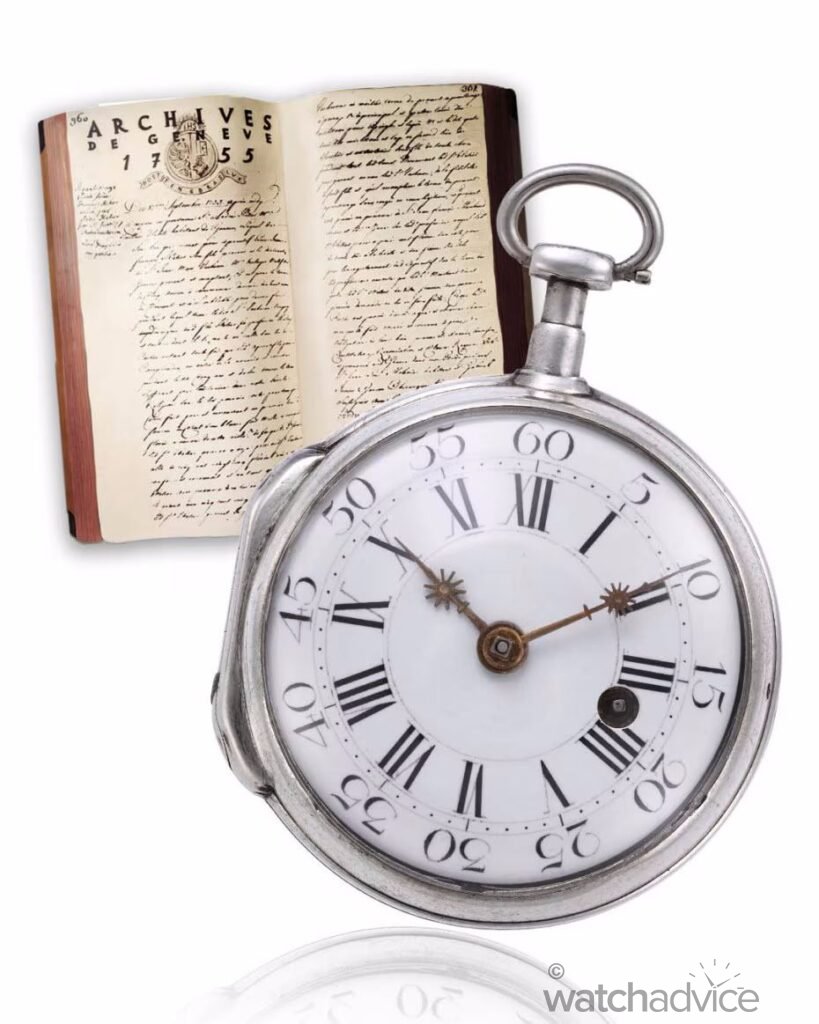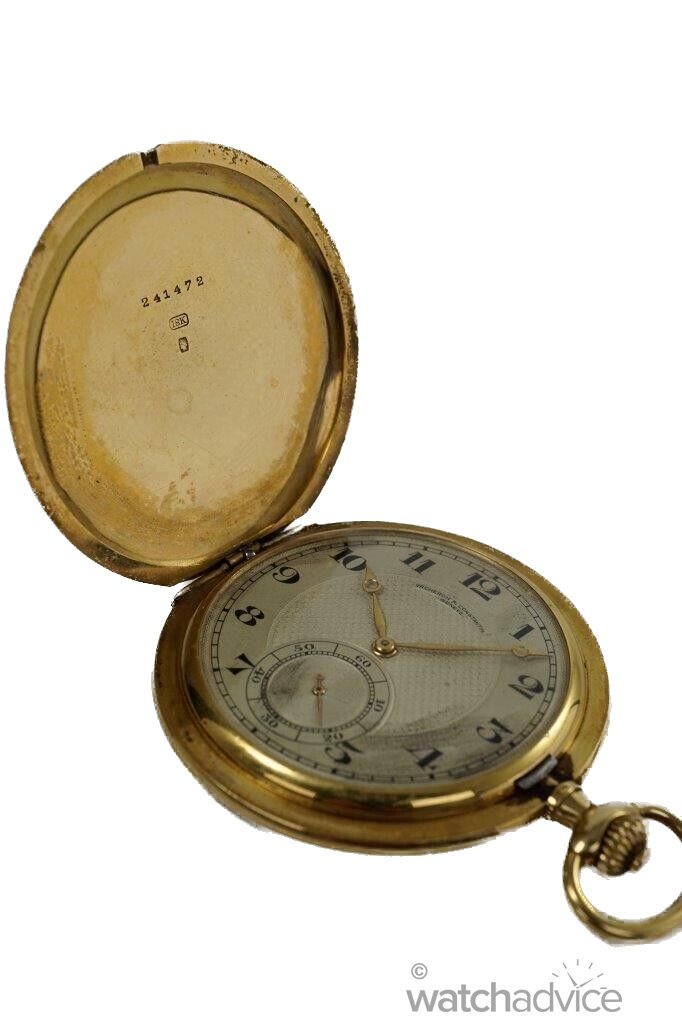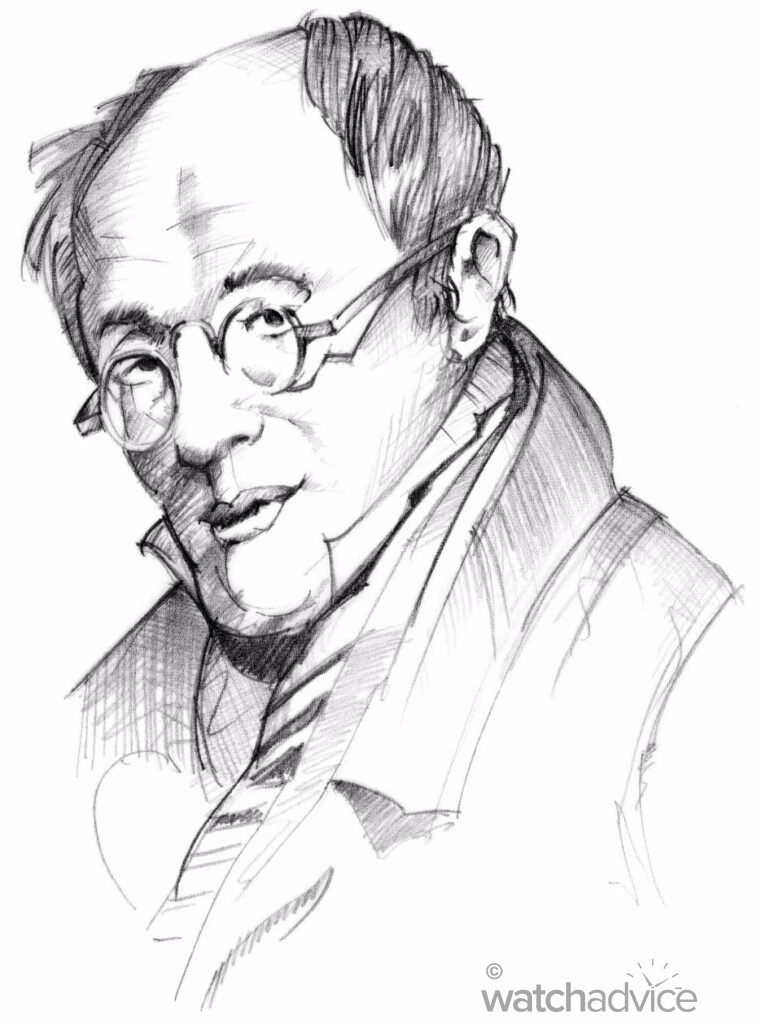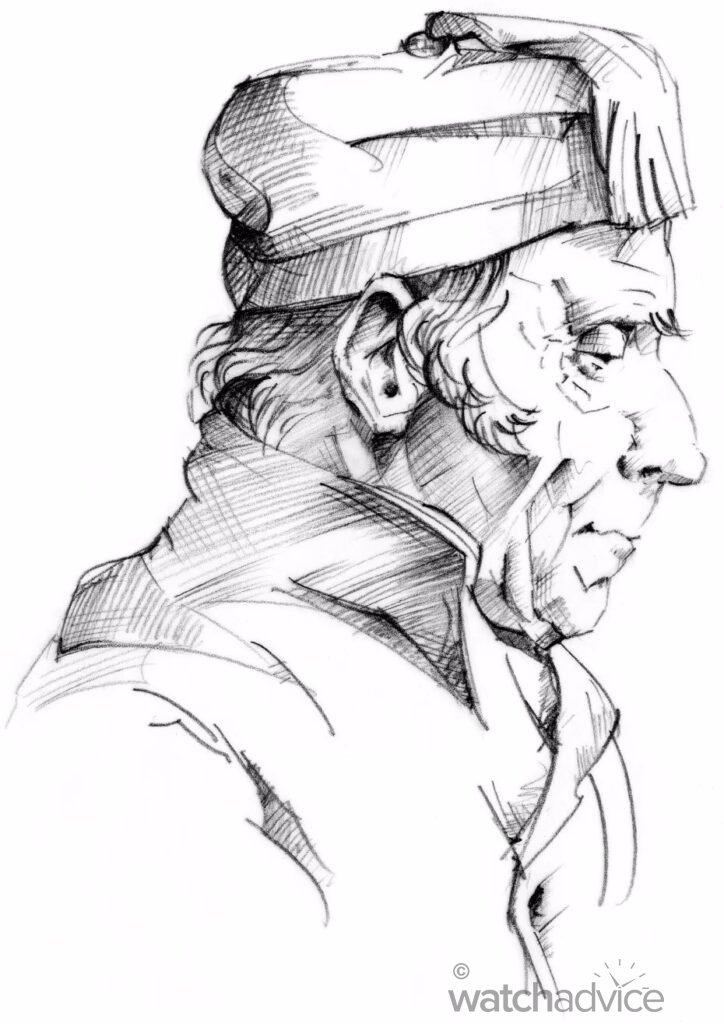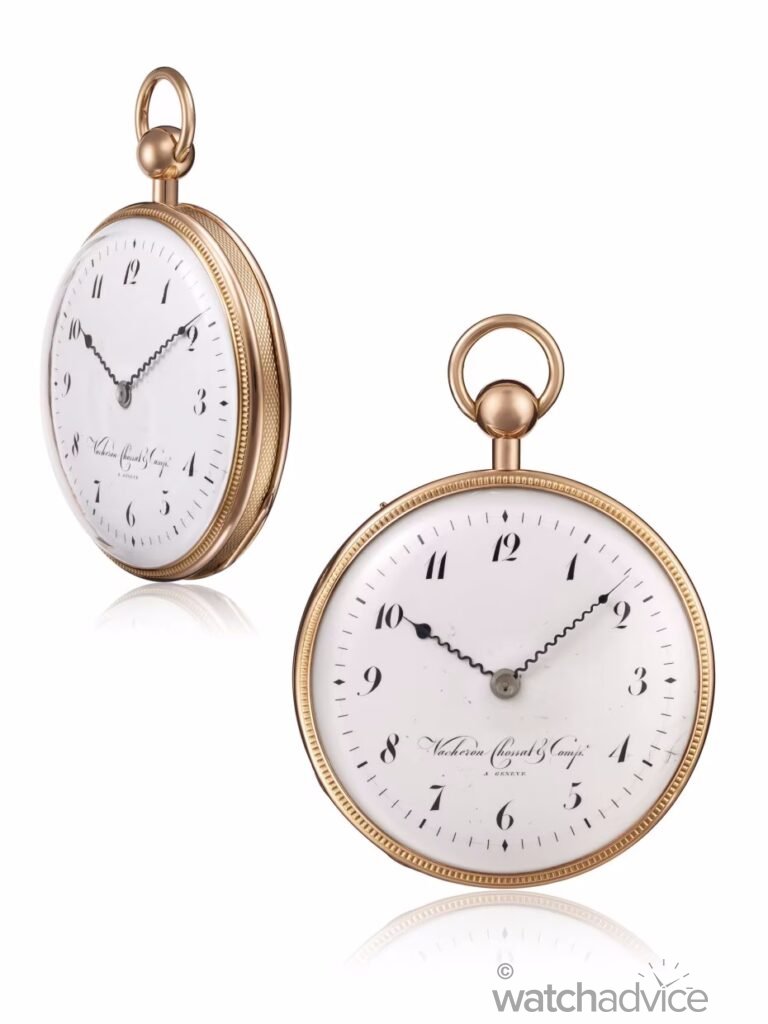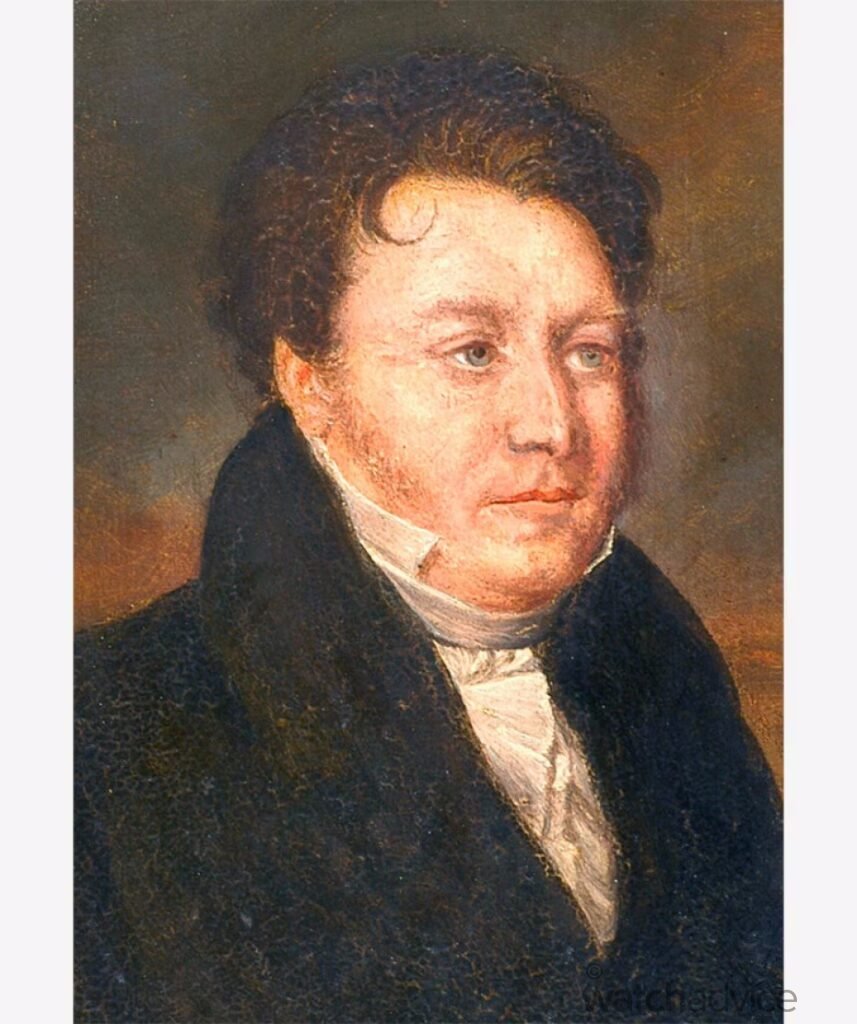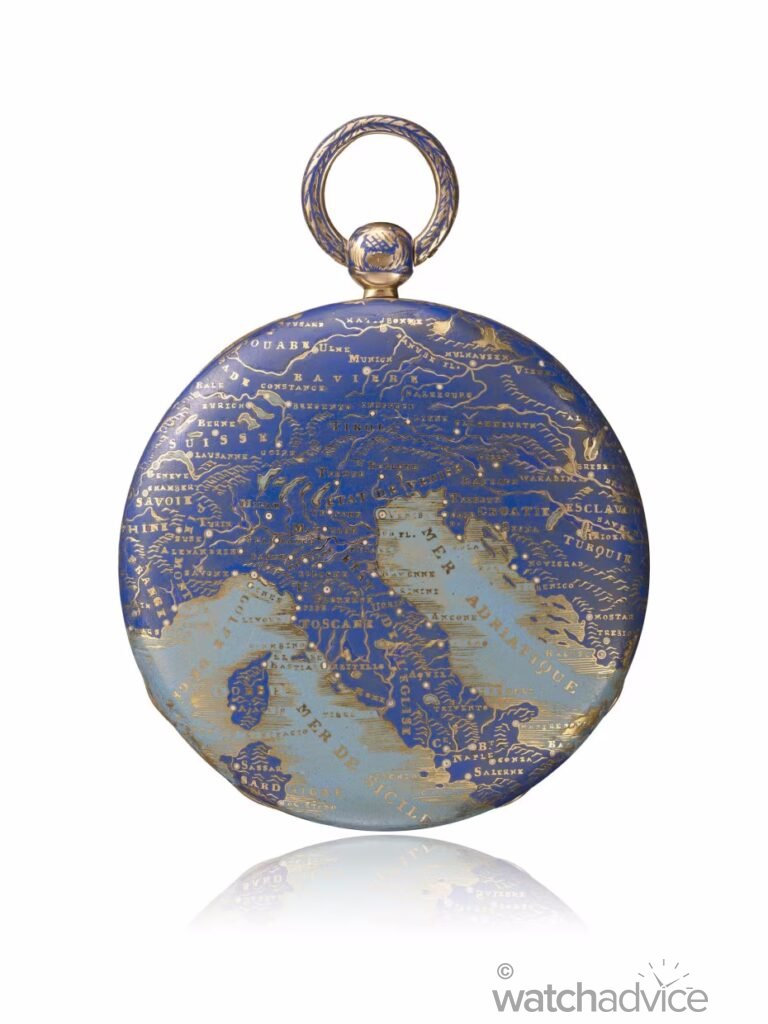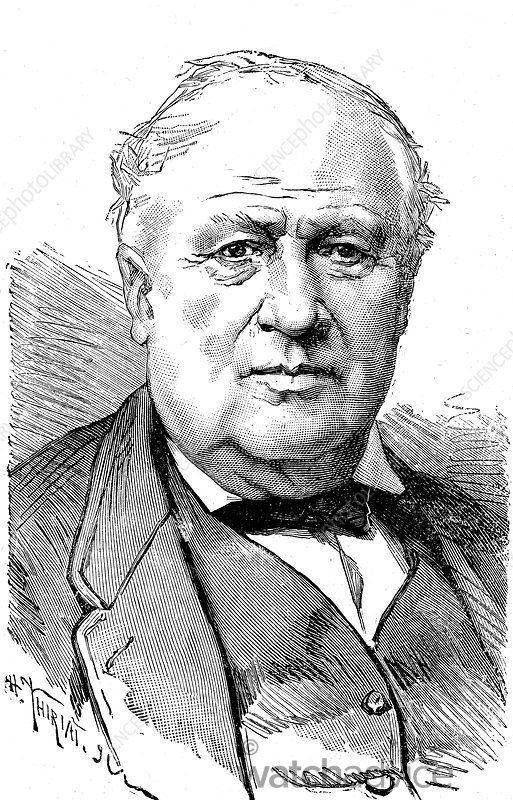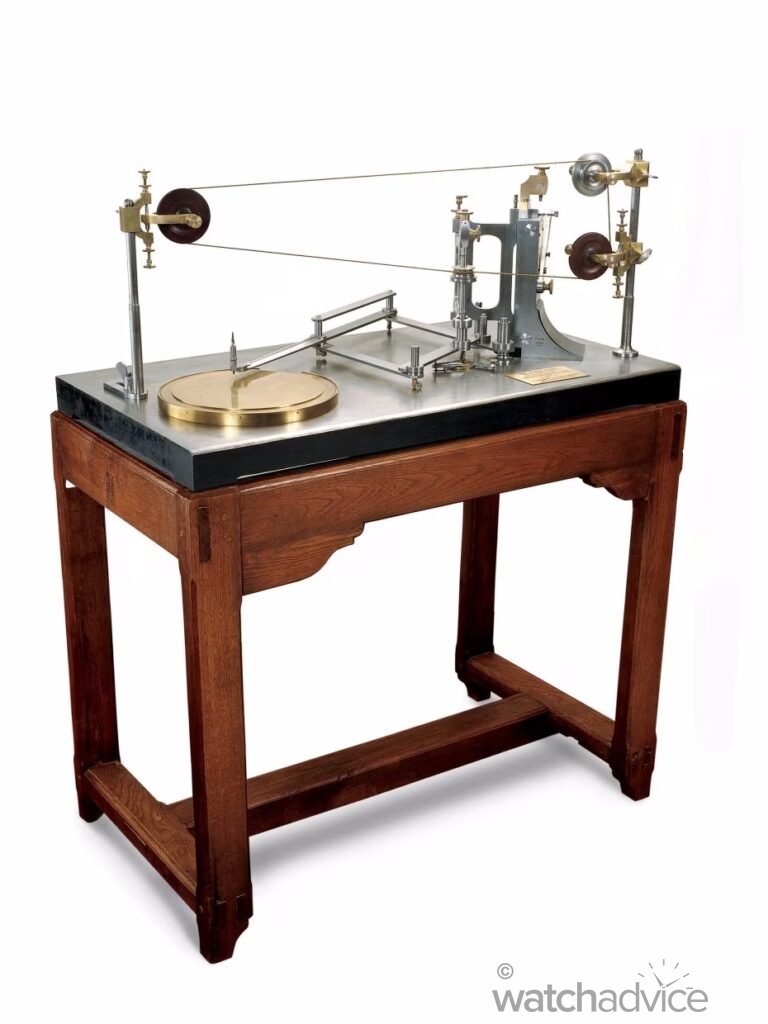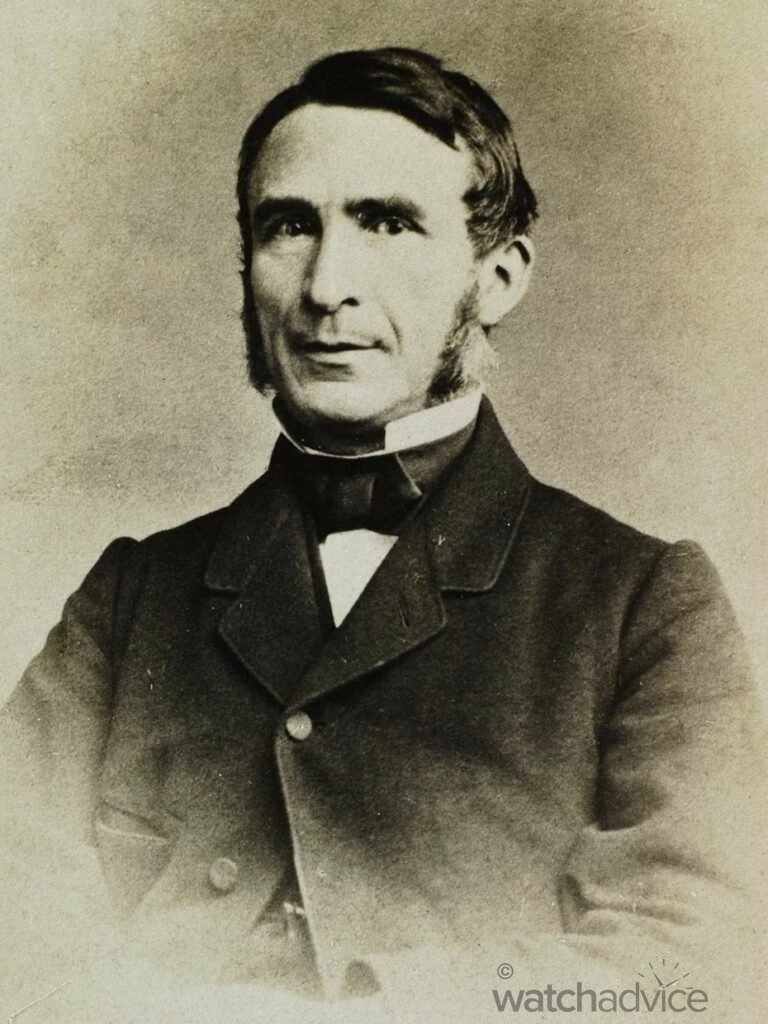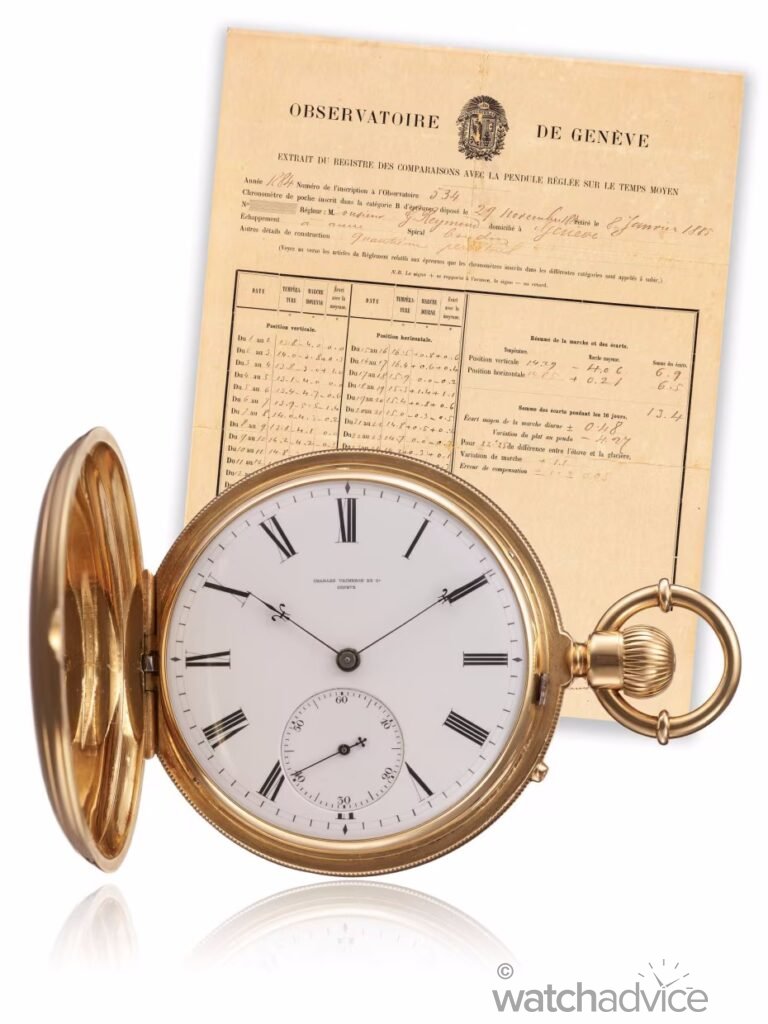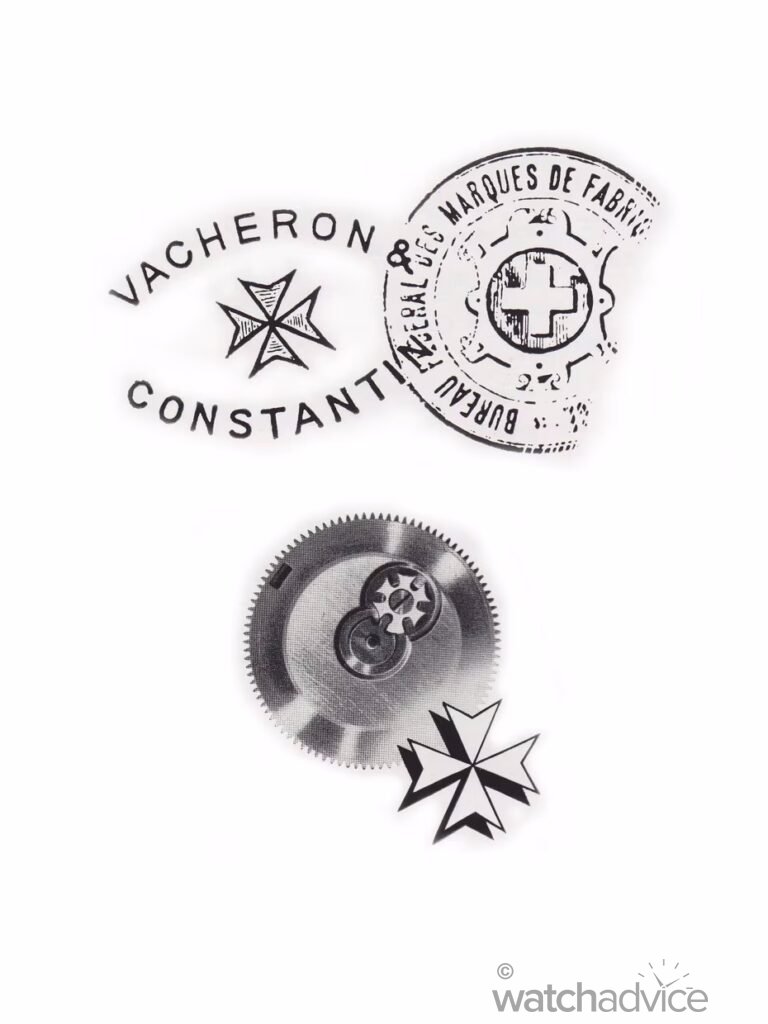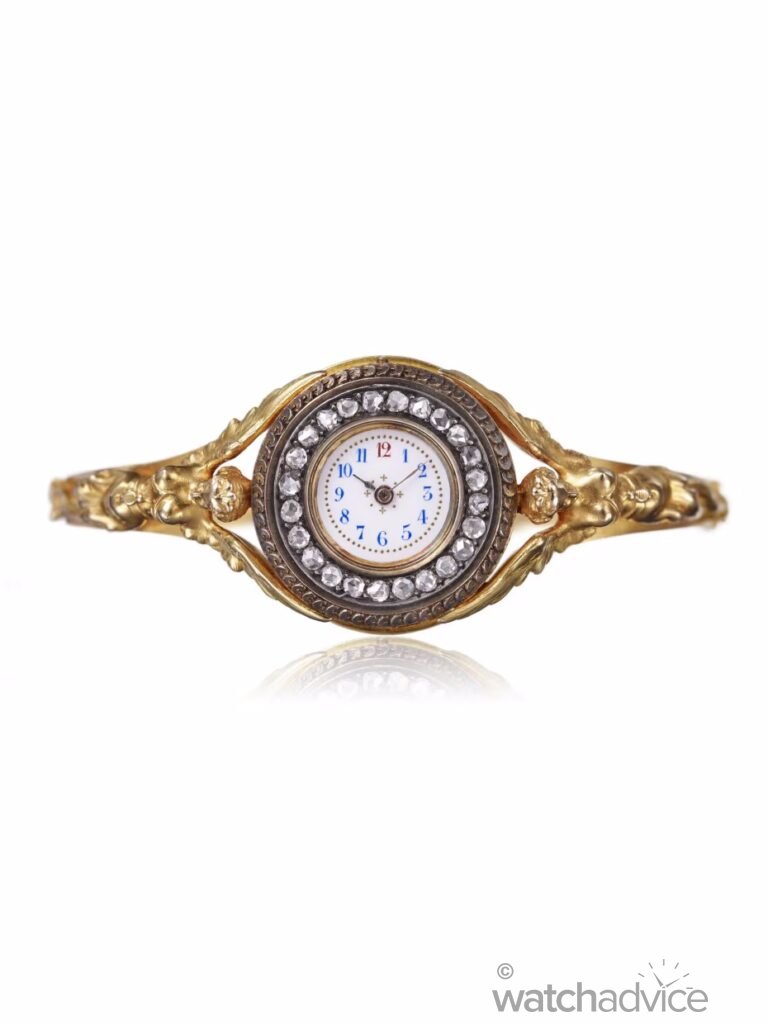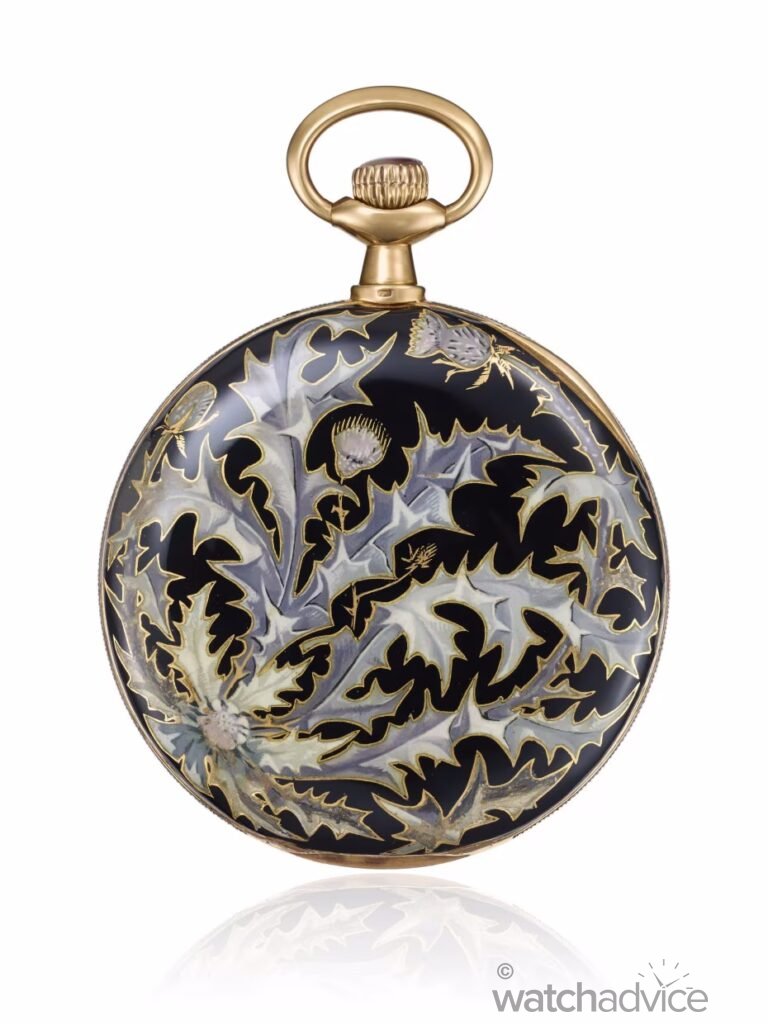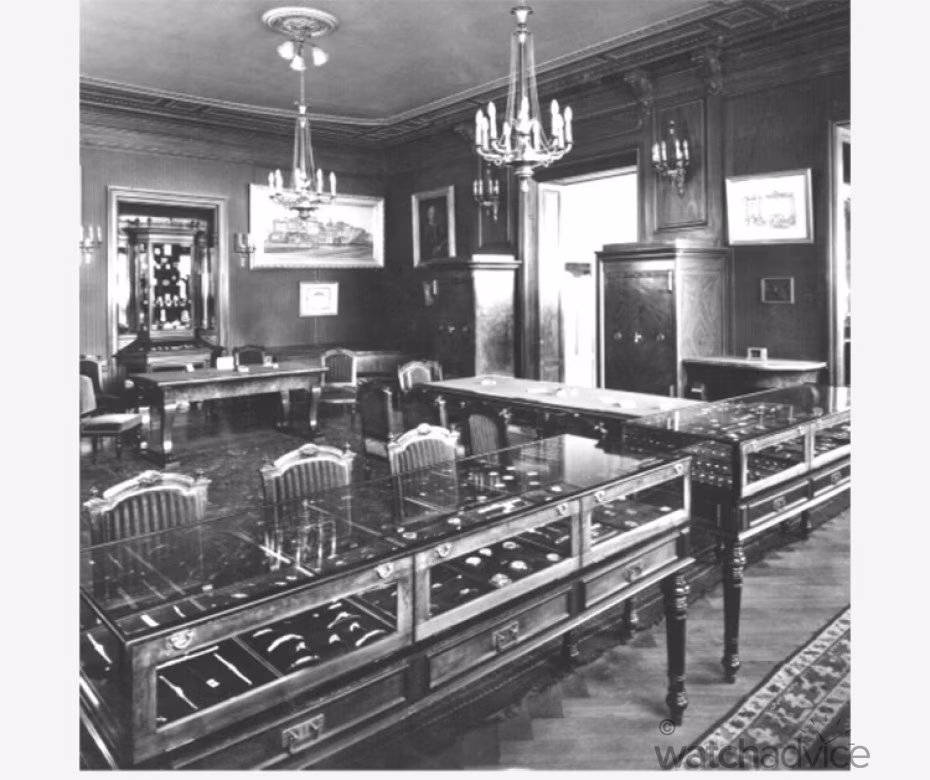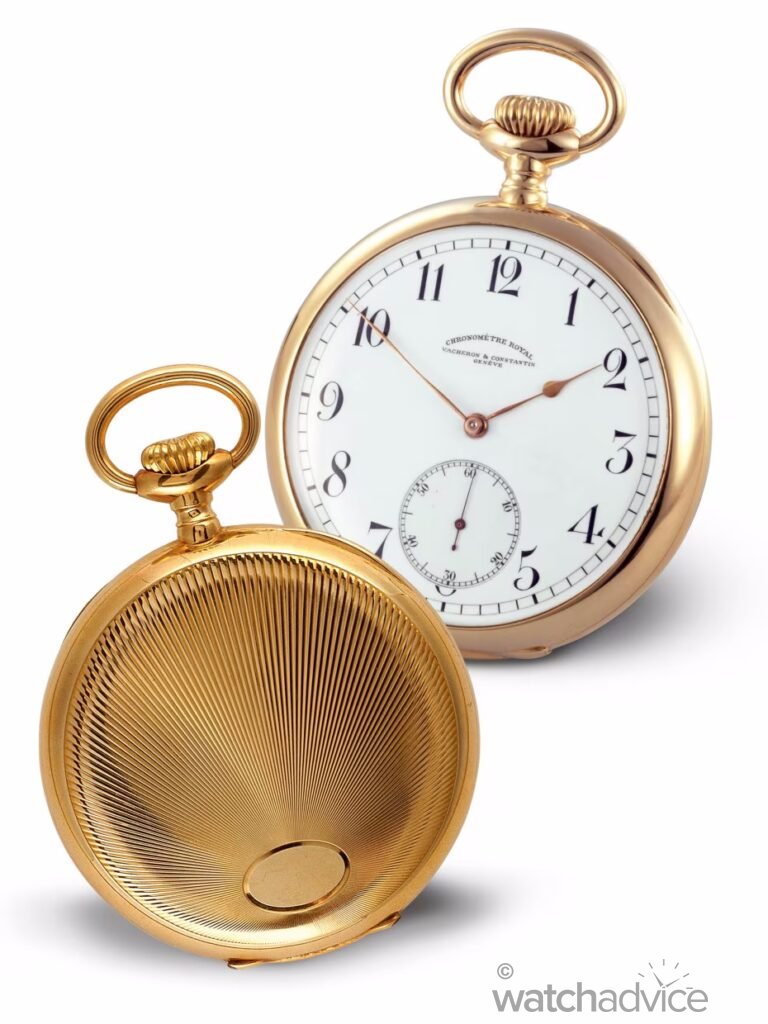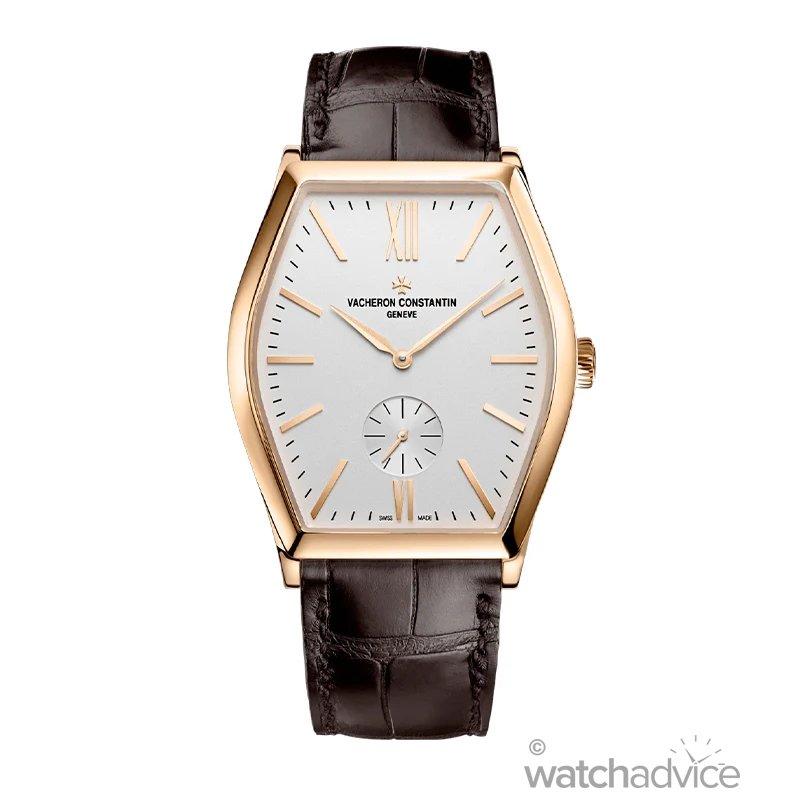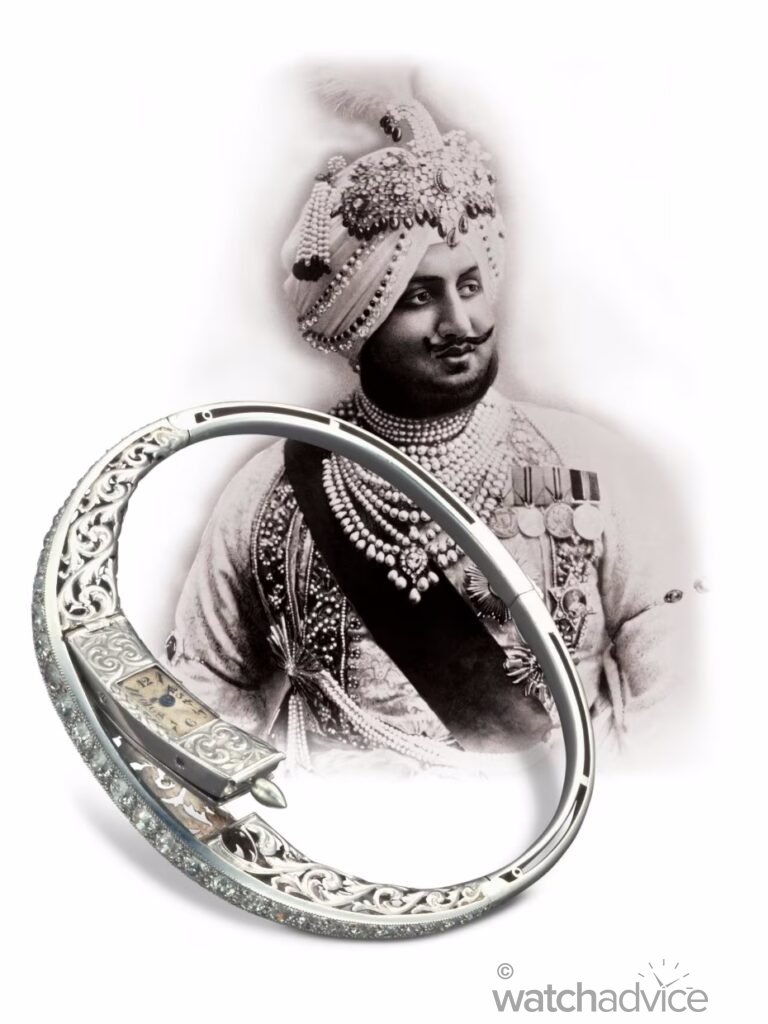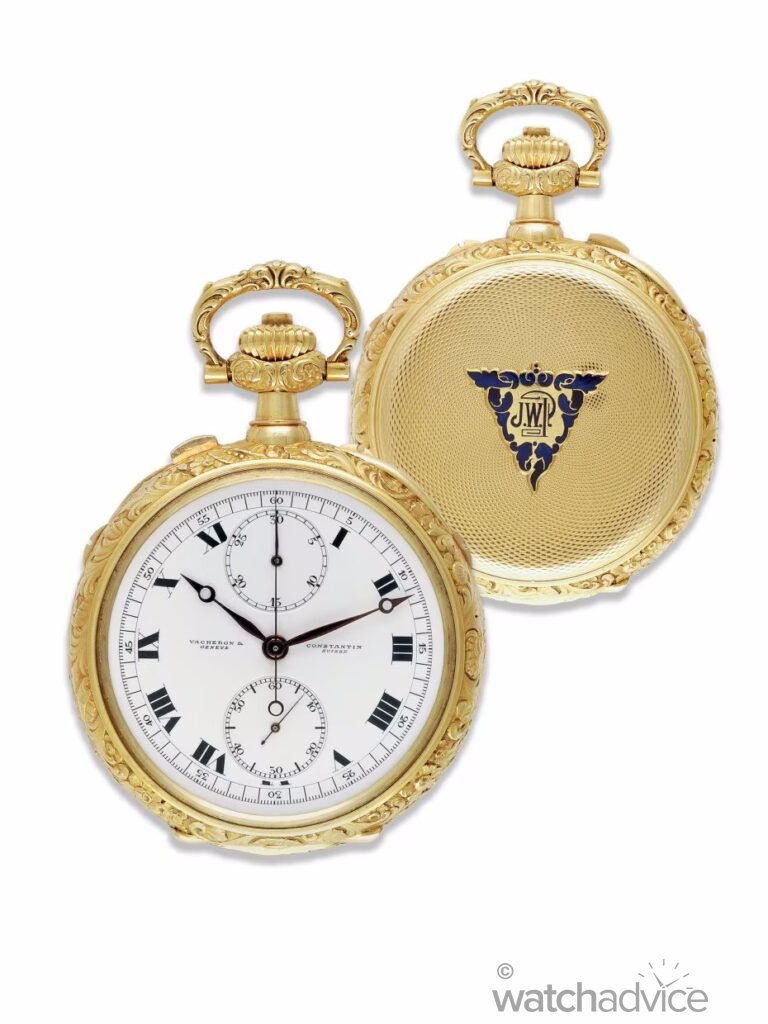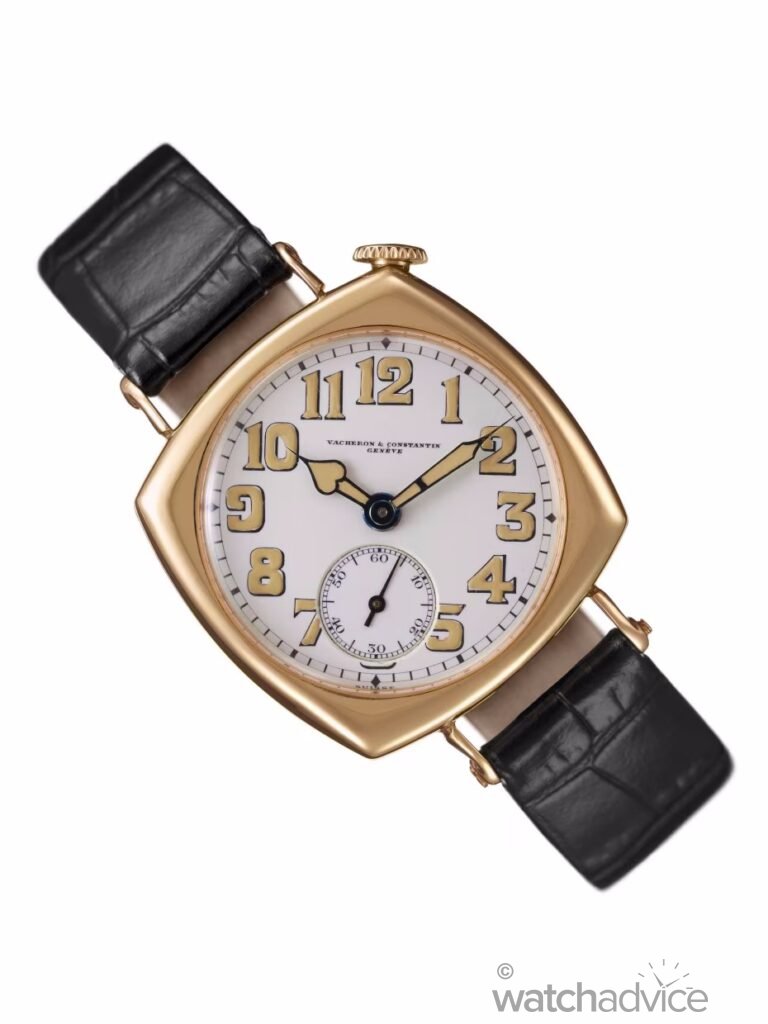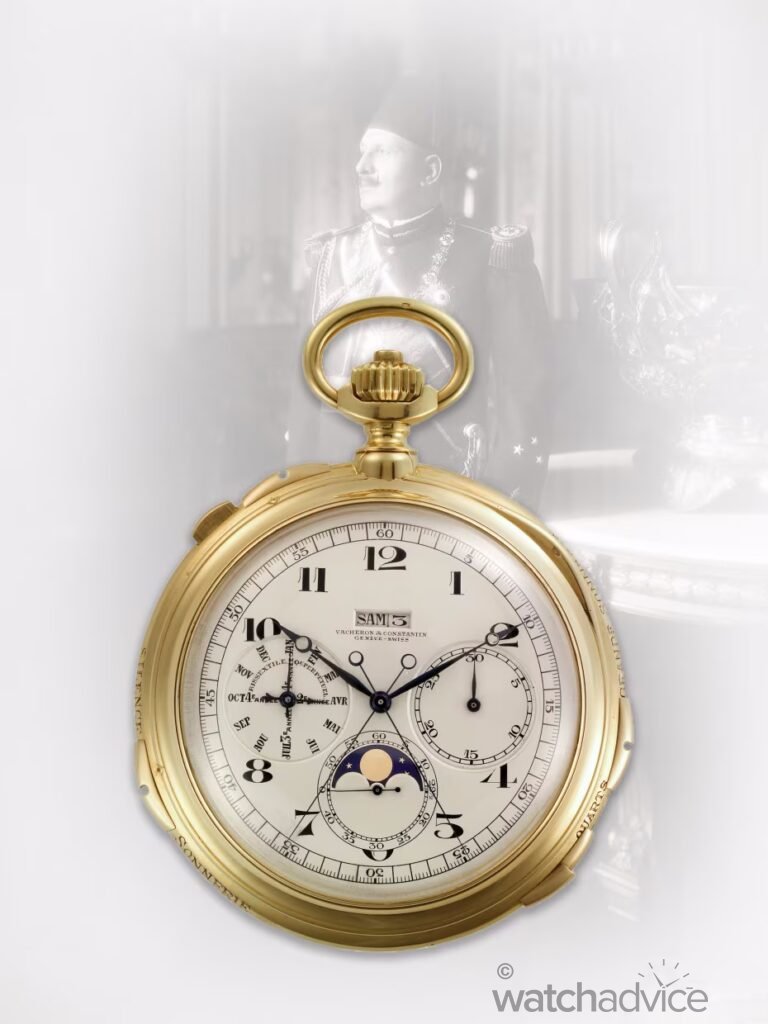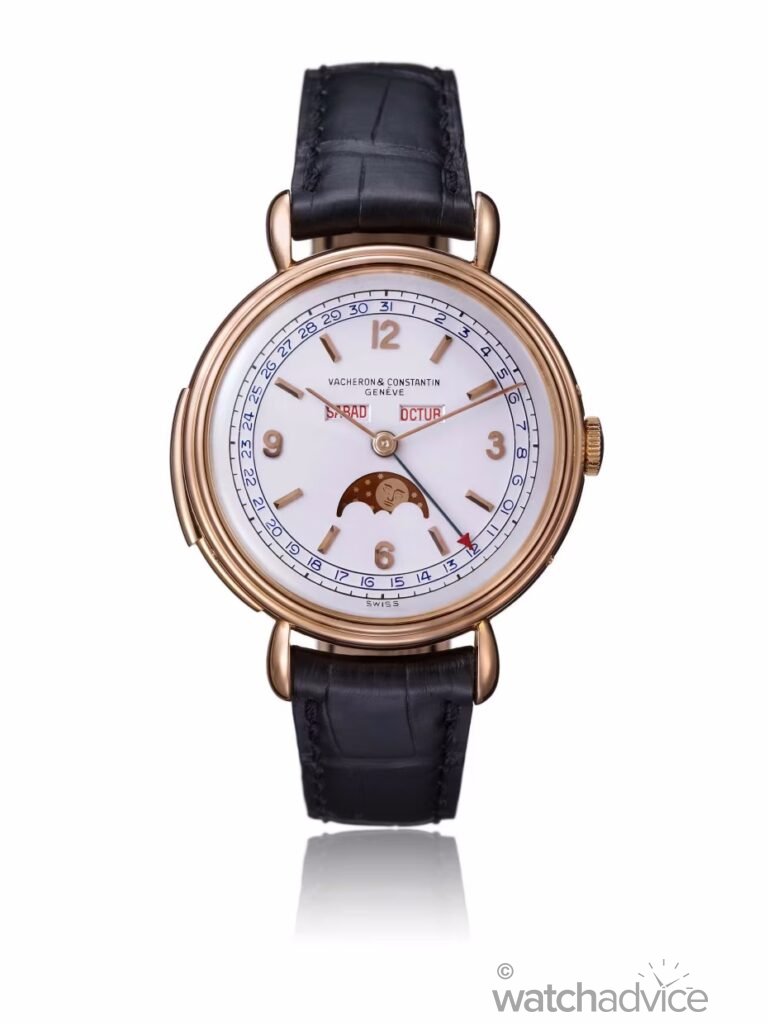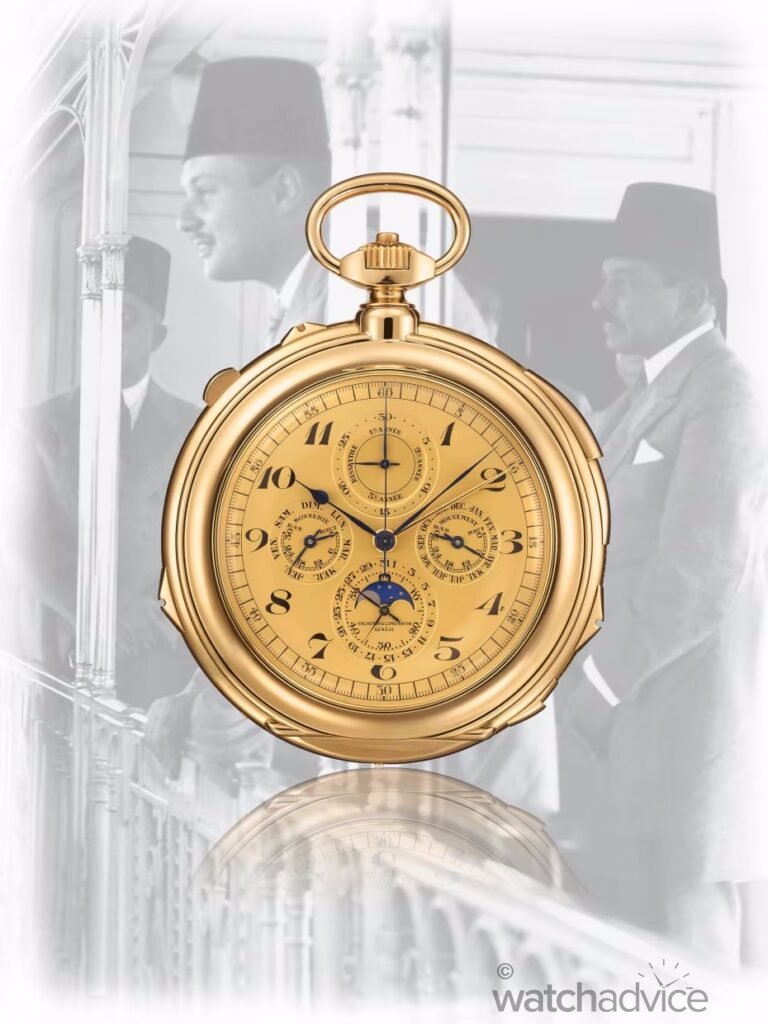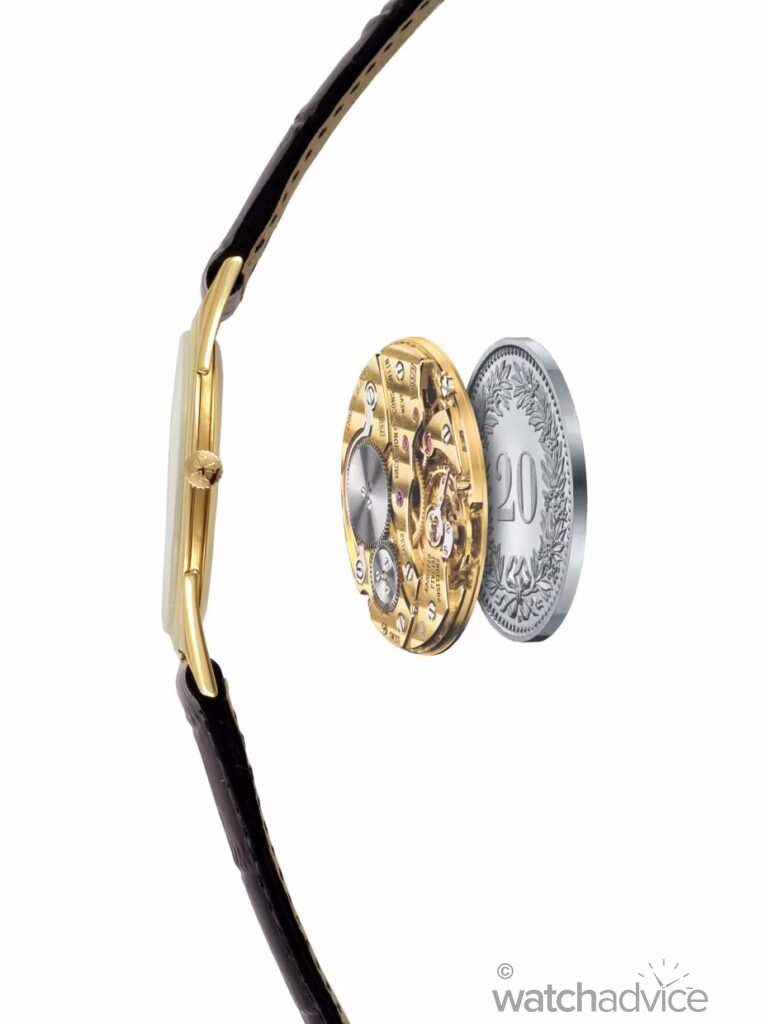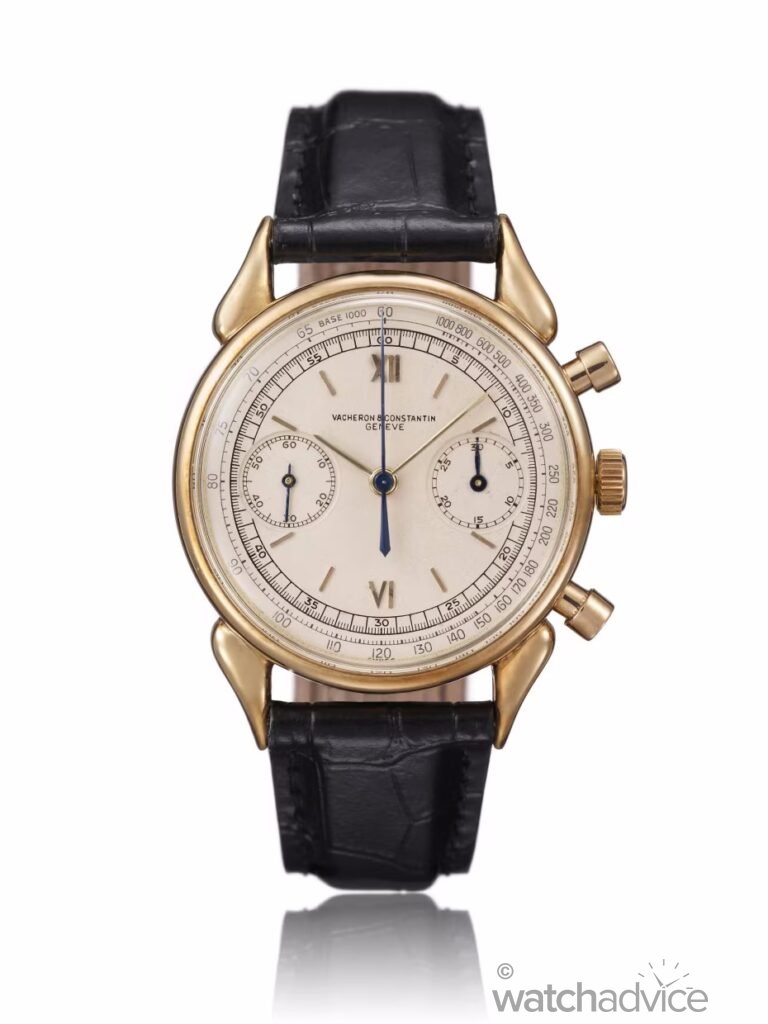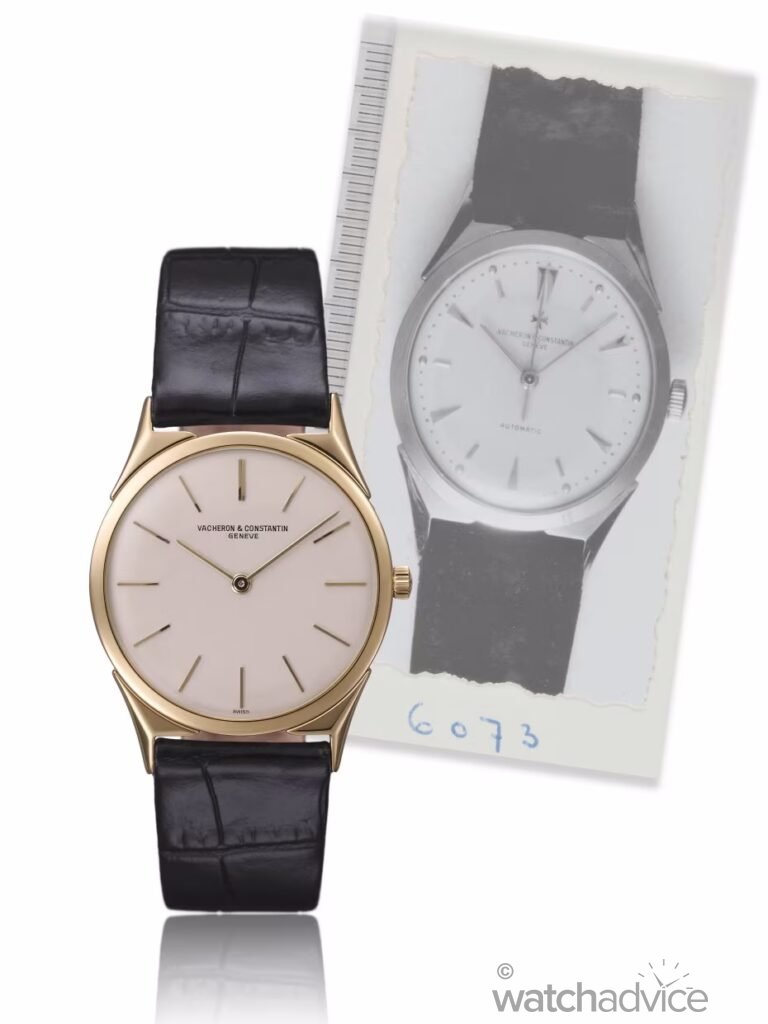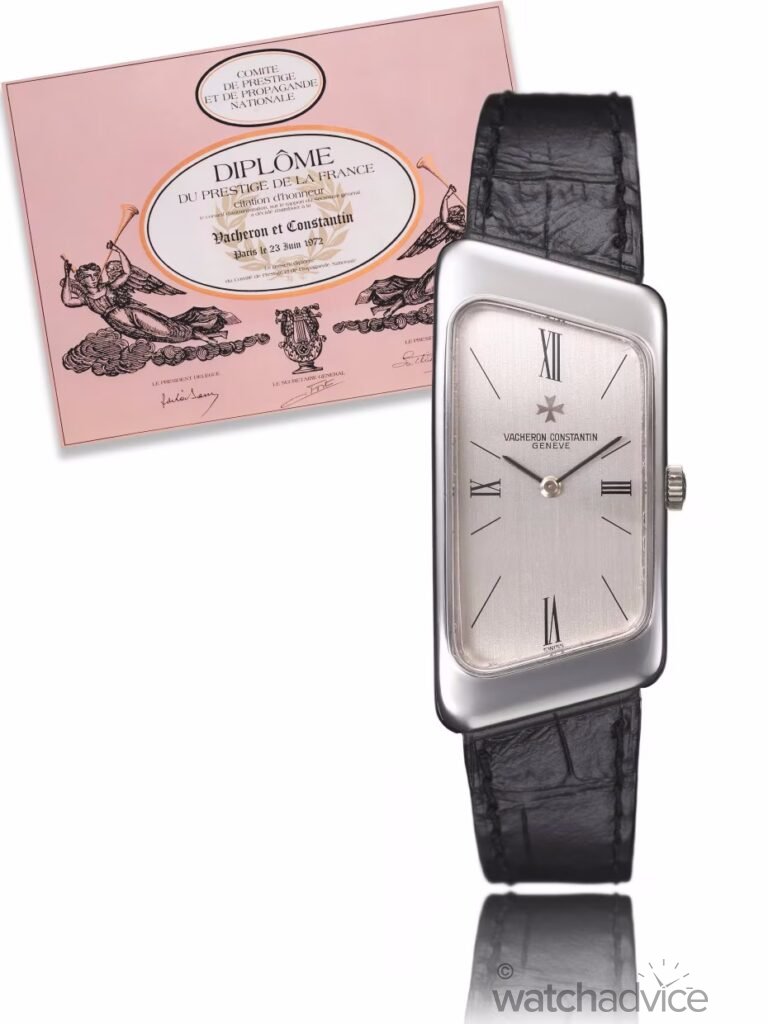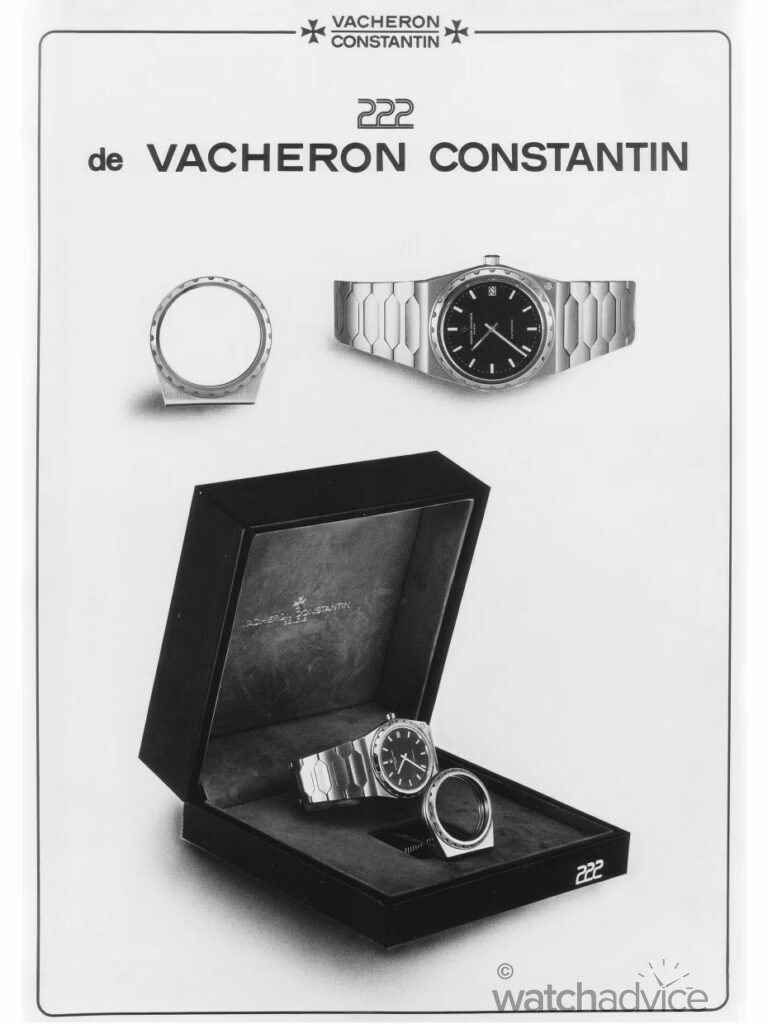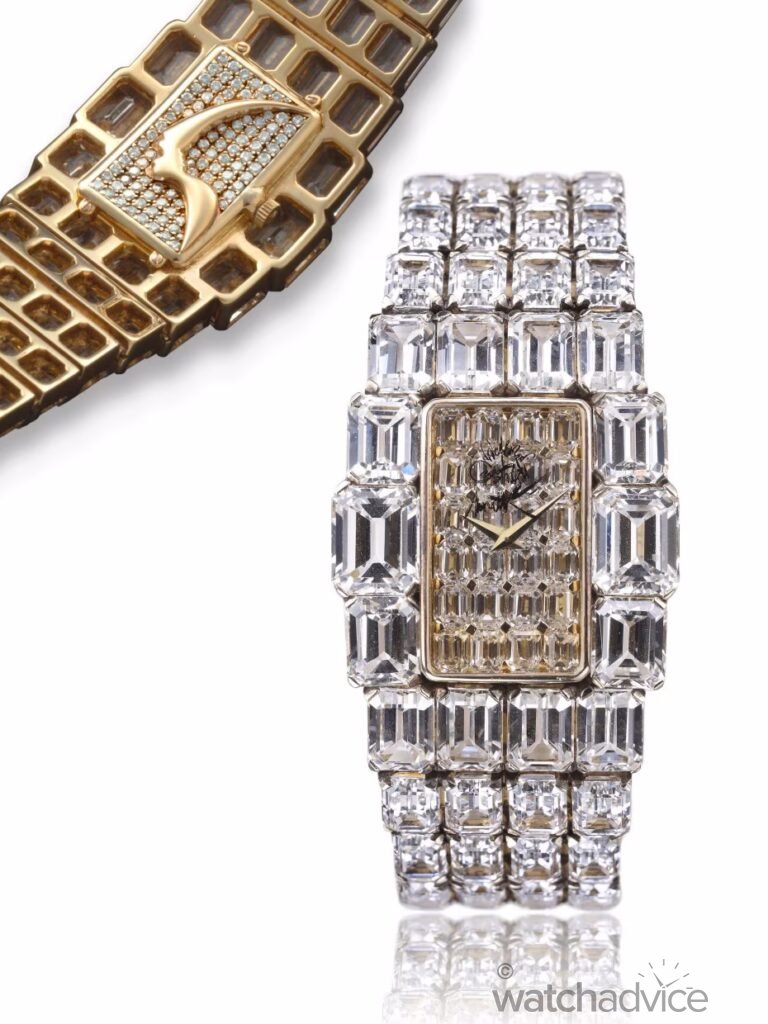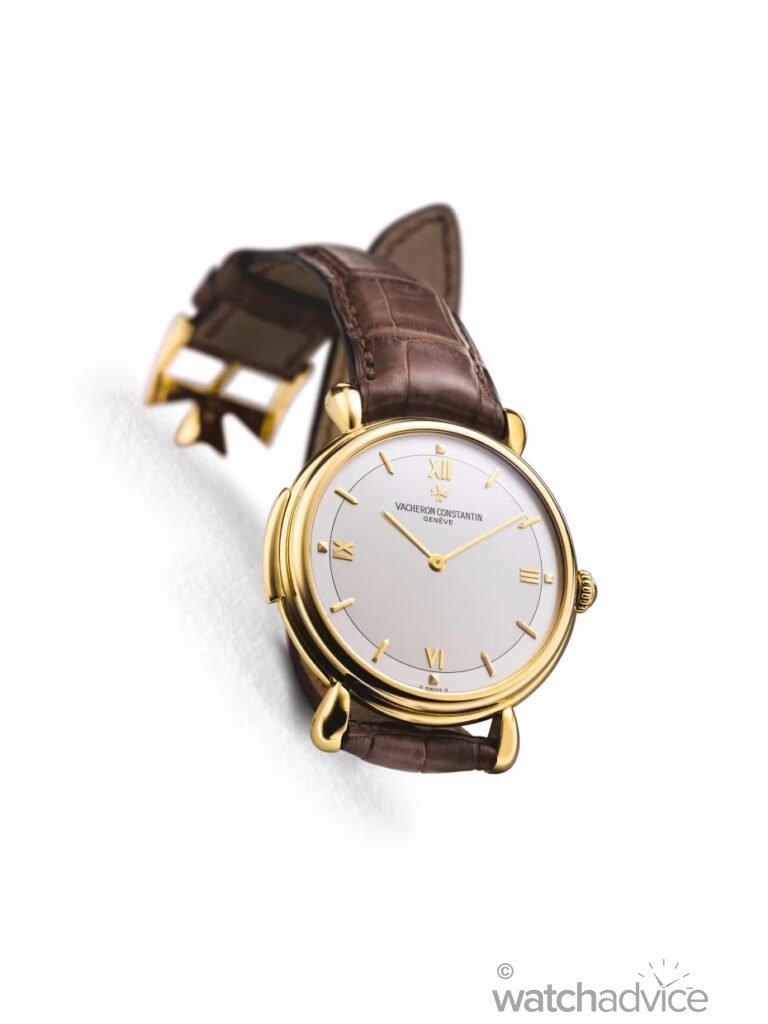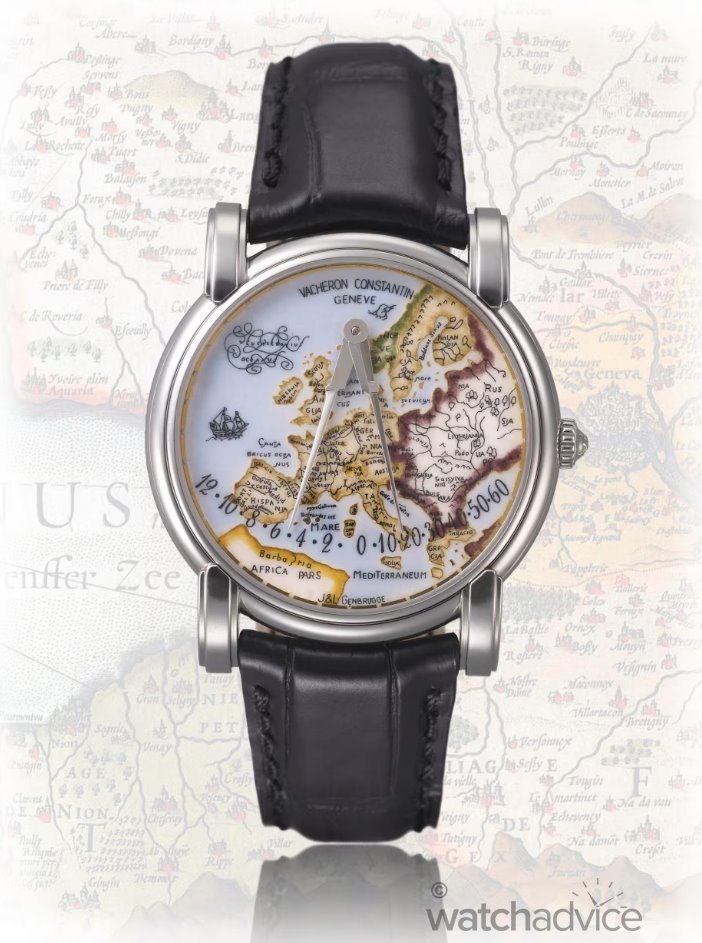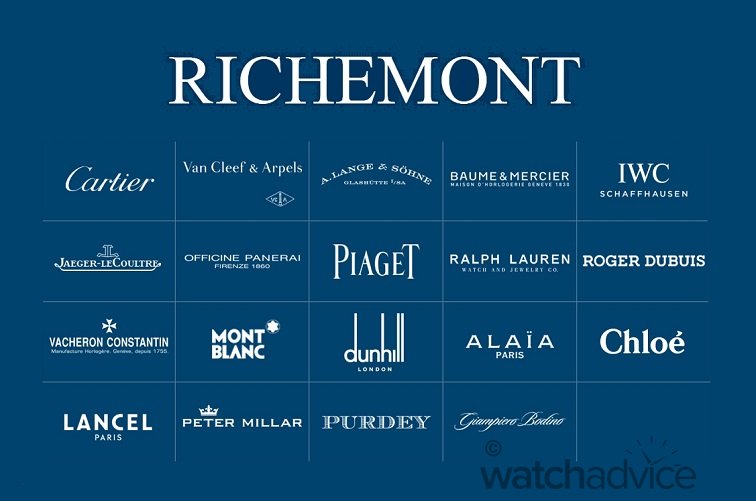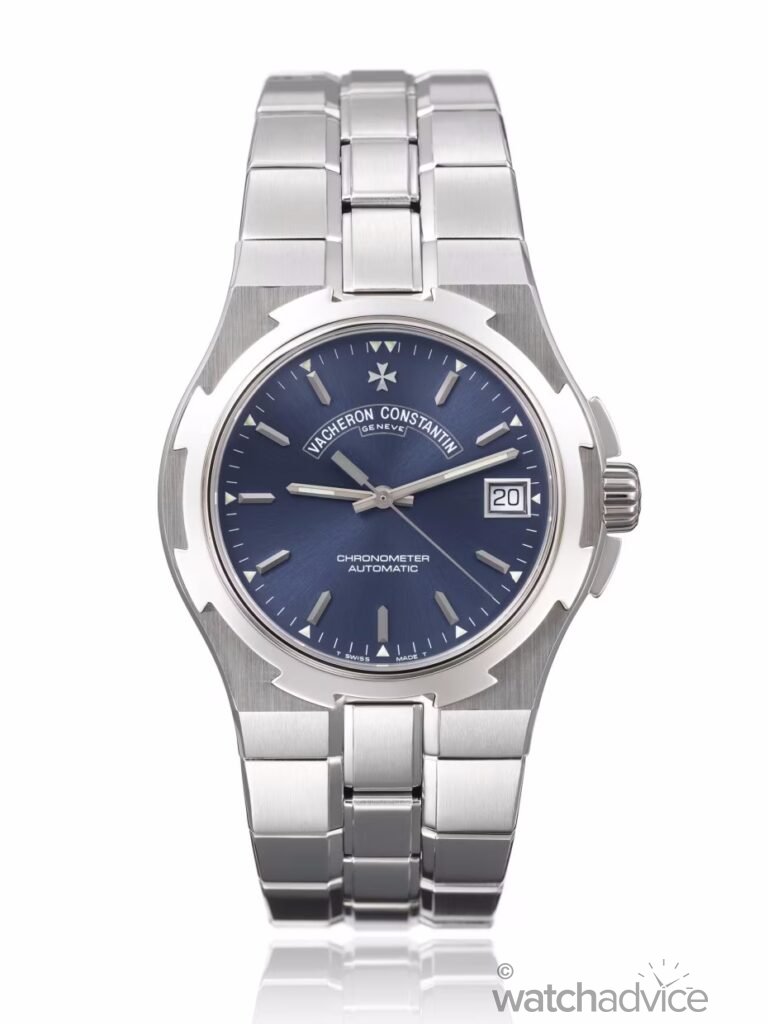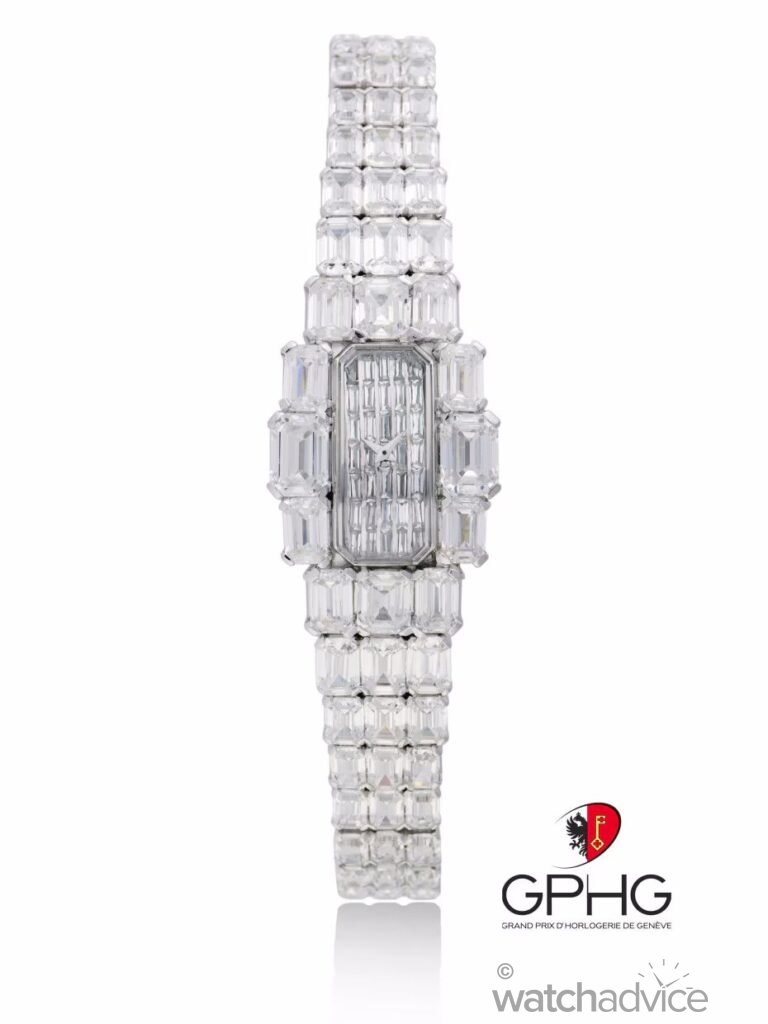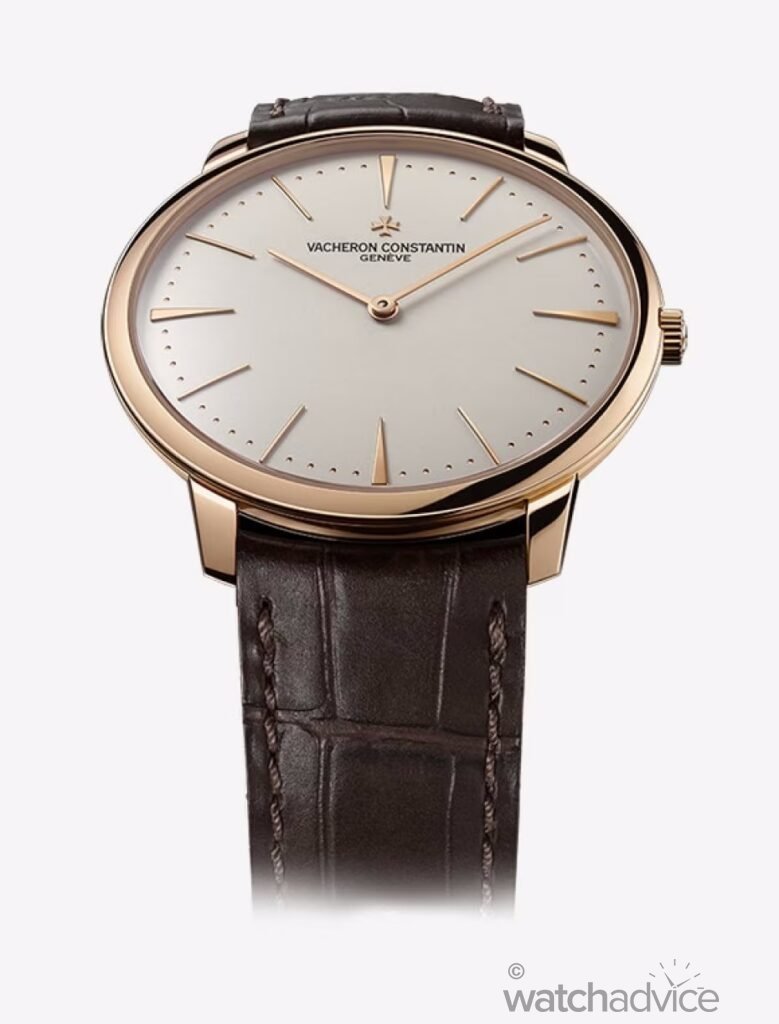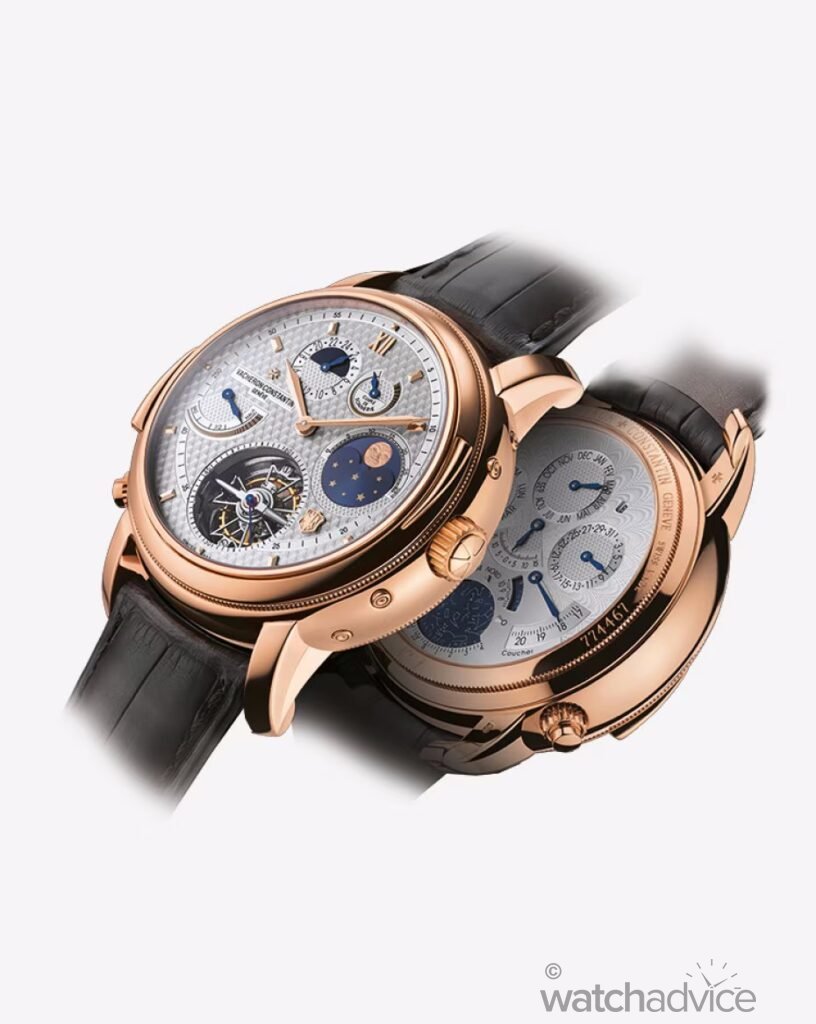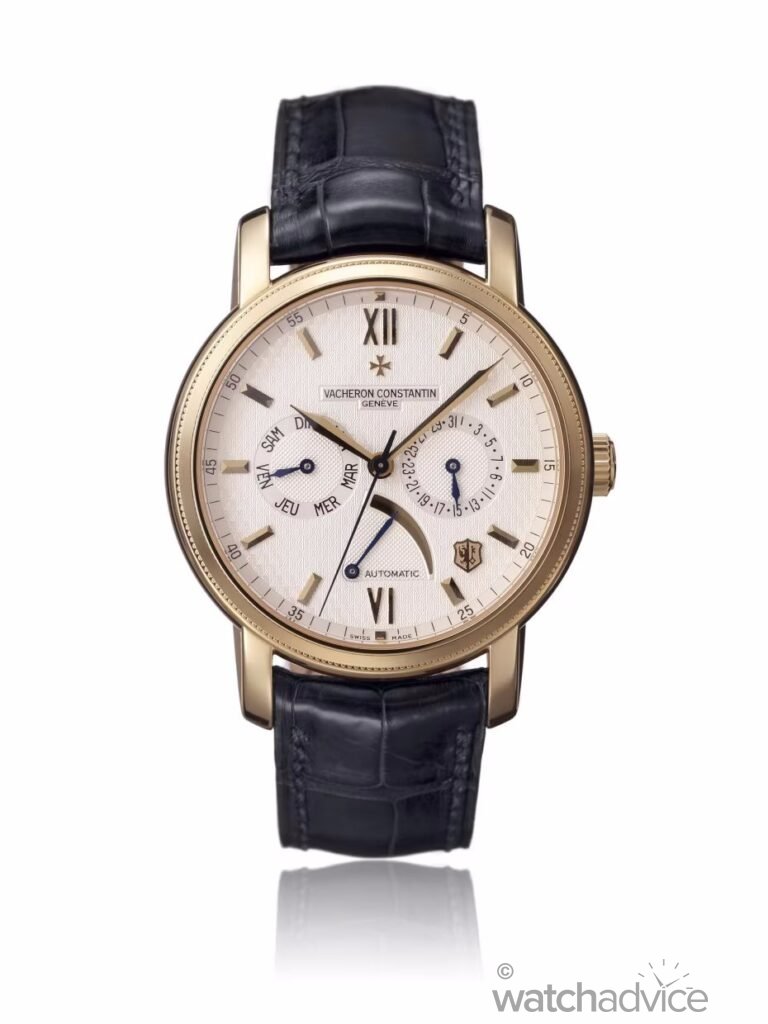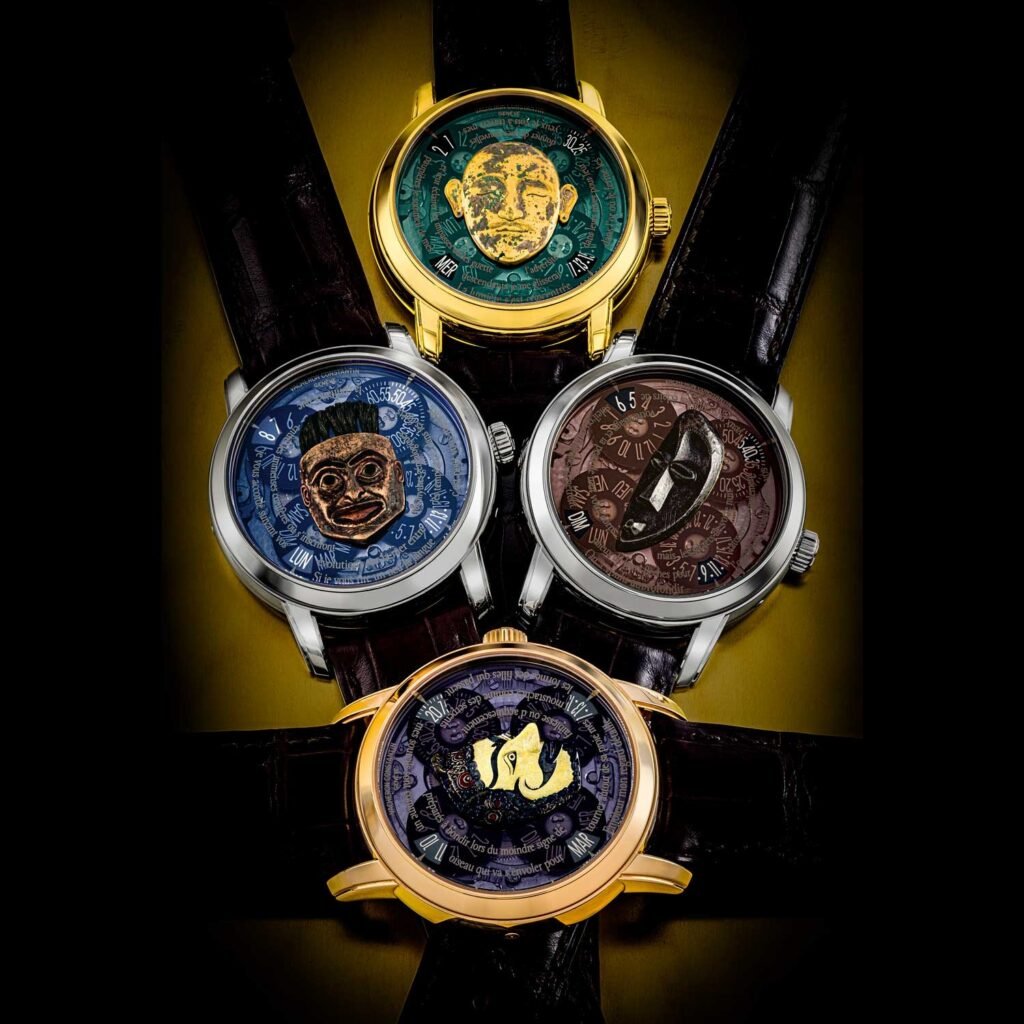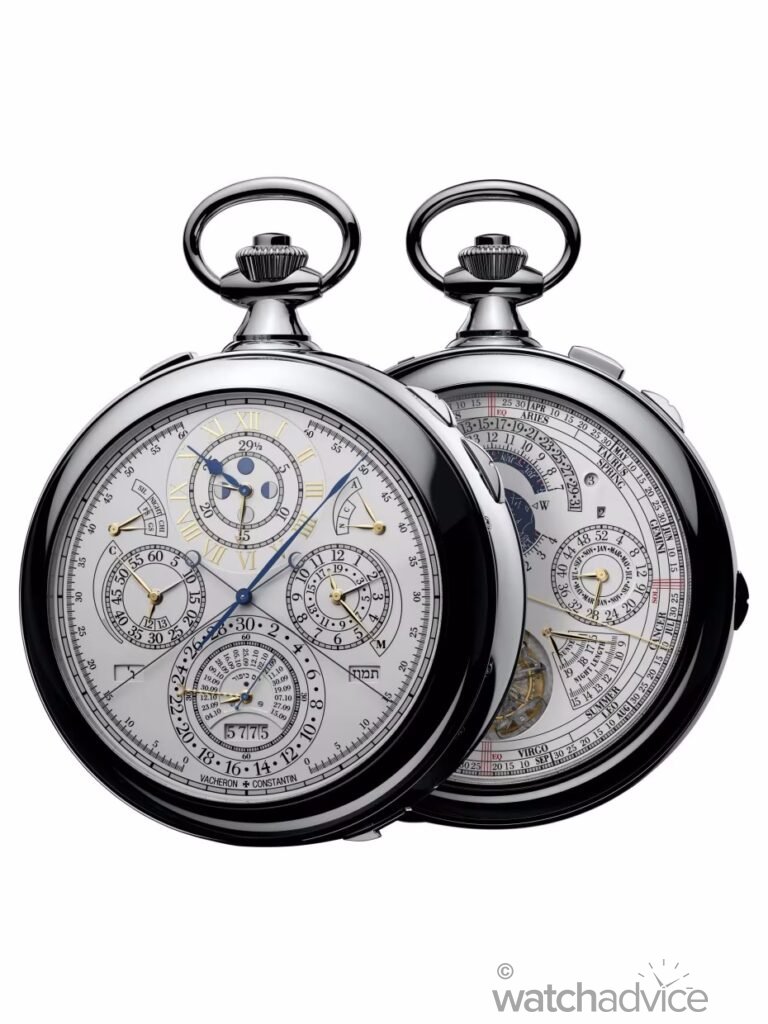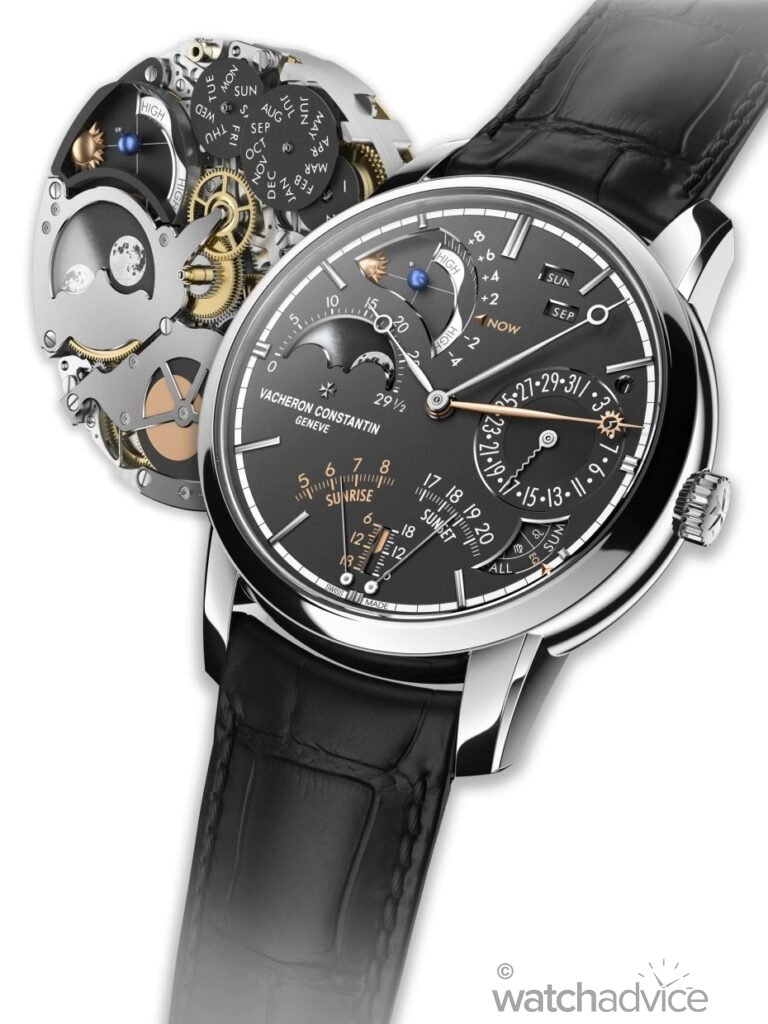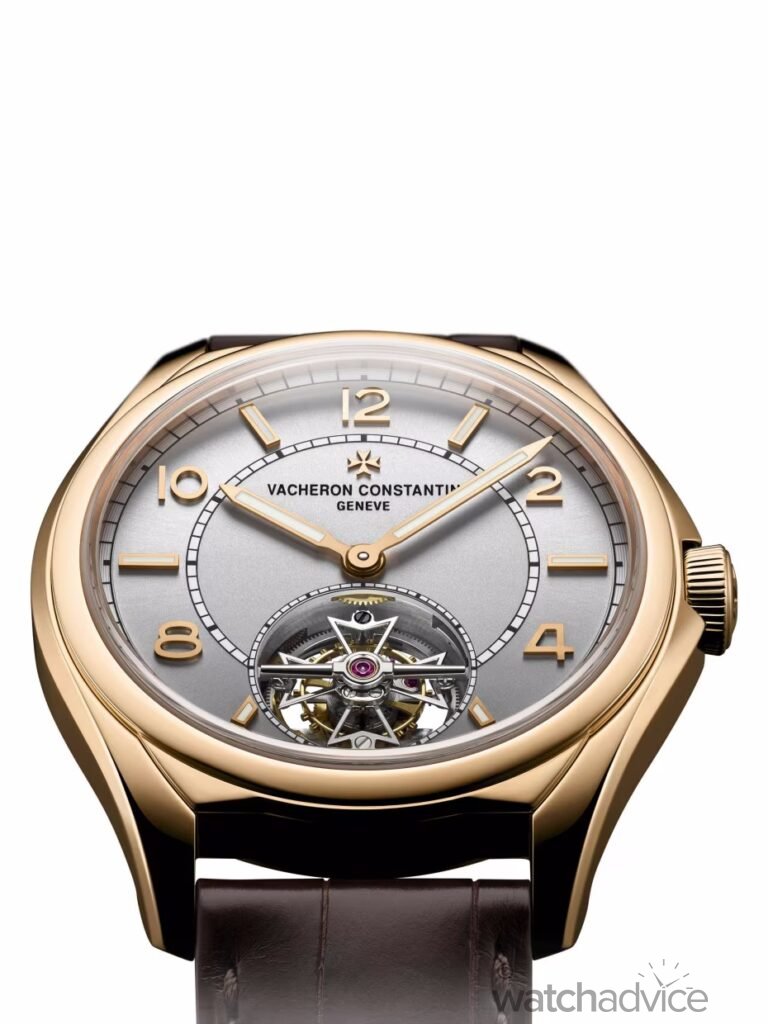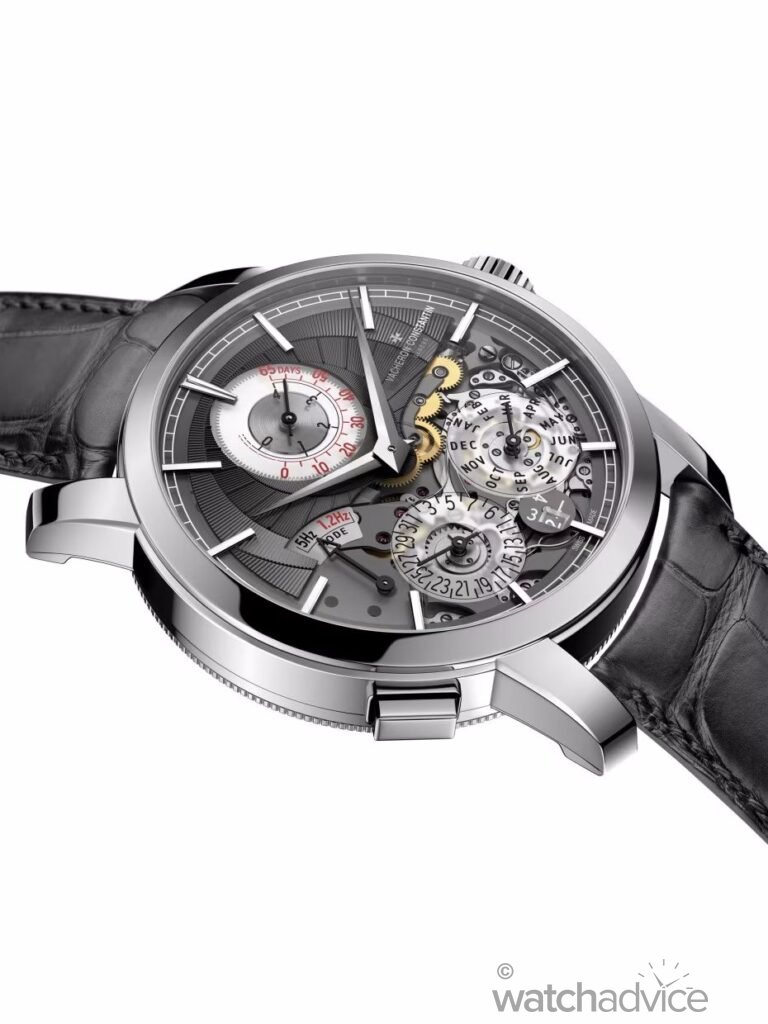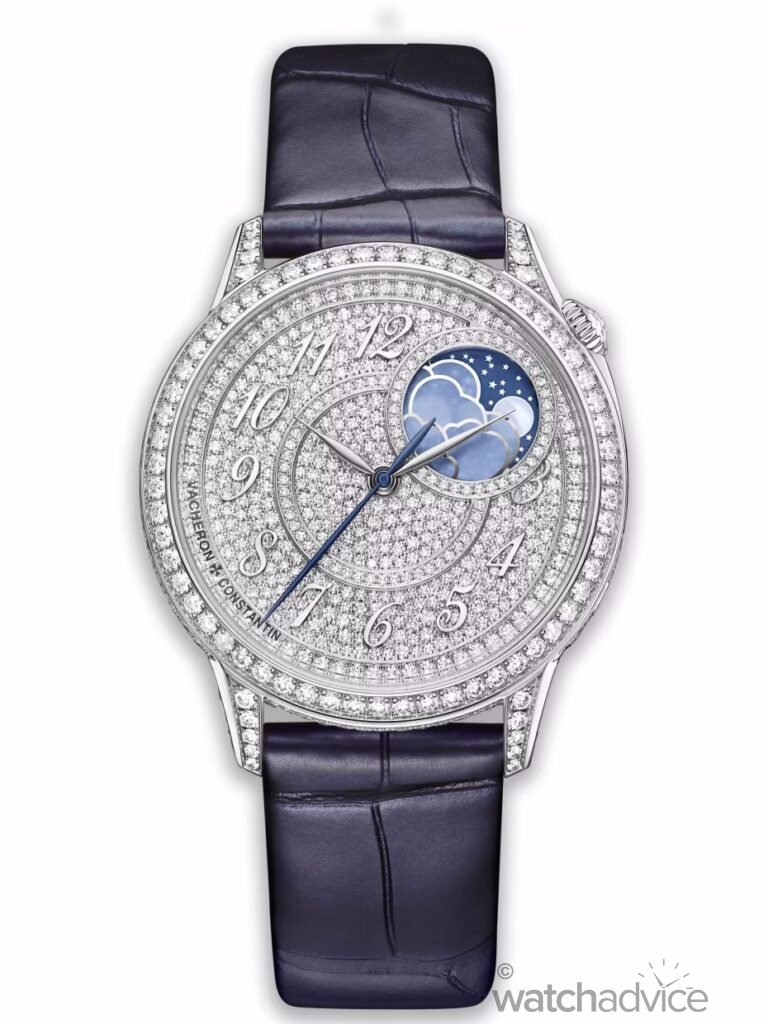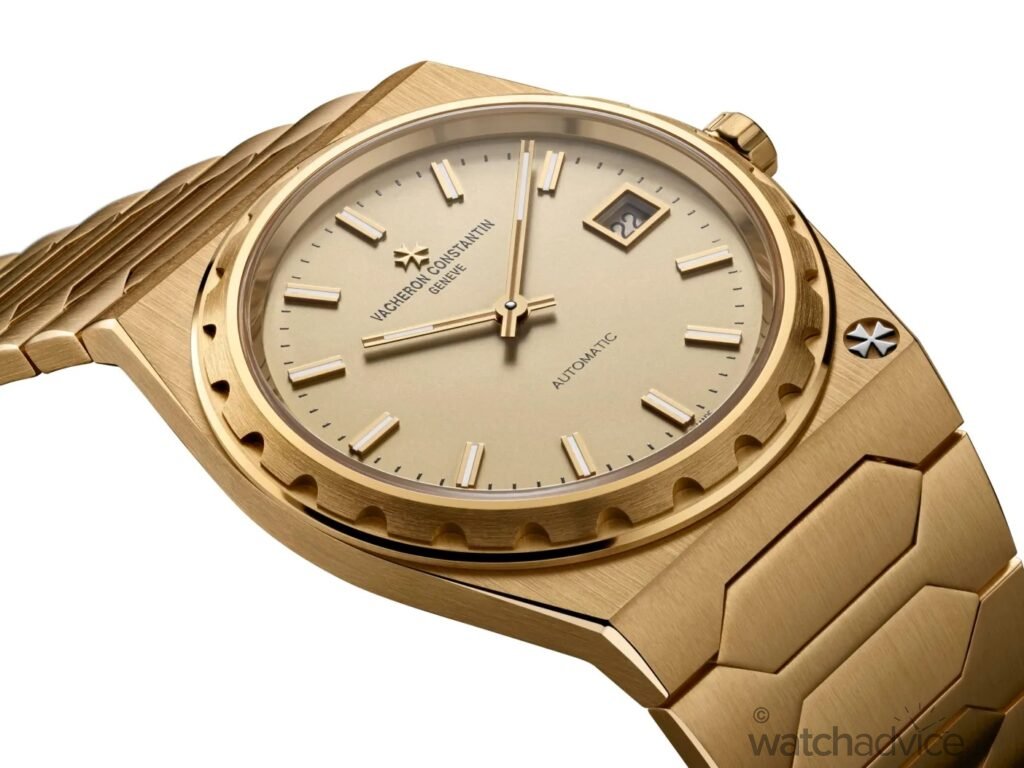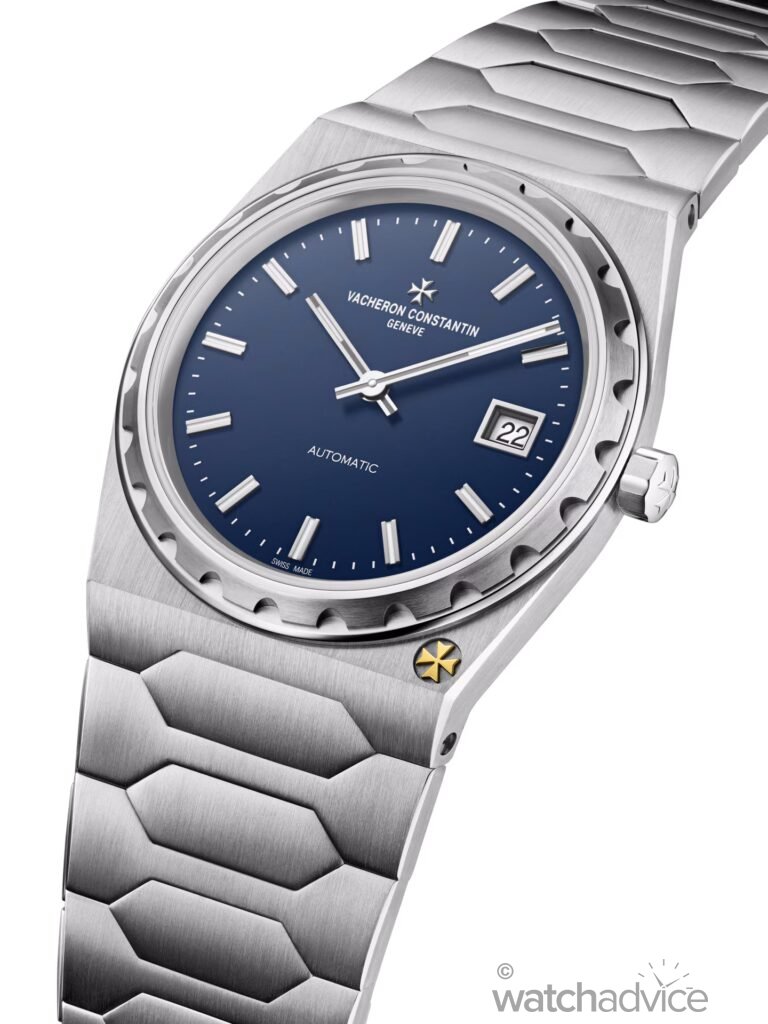In this latest history article, we look at the world’s oldest watch manufacturer in continuous operation, with 270 years of uninterrupted expertise and production!
Vacheron Constantin is one of the most revered names in Swiss Watchmaking for two-hundred and seventy years. Founded in 1755, Vacheron Constantin is the world’s oldest continuously operating watch manufacturer. This is a brand that has weathered many storms, such as world wars, economic shifts, the Quartz Crisis and technological revolutions, all the while maintaining an unwavering commitment to creating timepeices that display an elite level of craftsmanship, precision and innovation.
2025 marks the 270th anniversary of Vacheron Constantin, a brand that has undoubtedly changed the course of watchmaking.
There are very few brands in the world of horology that have left a profound mark, as Vacheron Constantin has. The Maison’s pursuit of excellence has certainly helped shape the standards of watchmaking, from pioneering complications to creating watches that bring together art with mechanical complexity. Vacheron Constantin has a clientele that includes royalty, world leaders, and passionate collectors, which means that to deliver the finest timepieces, the Maison has consistently upheld the highest level of watchmaking.
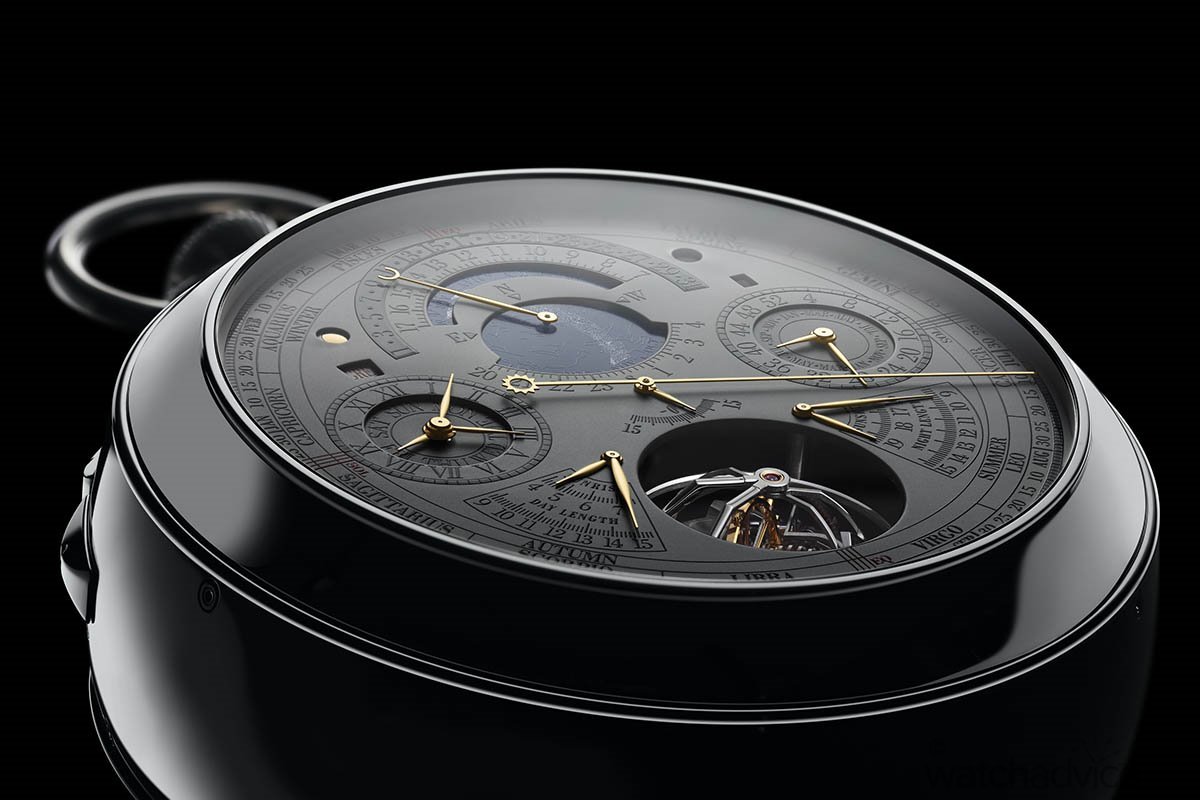
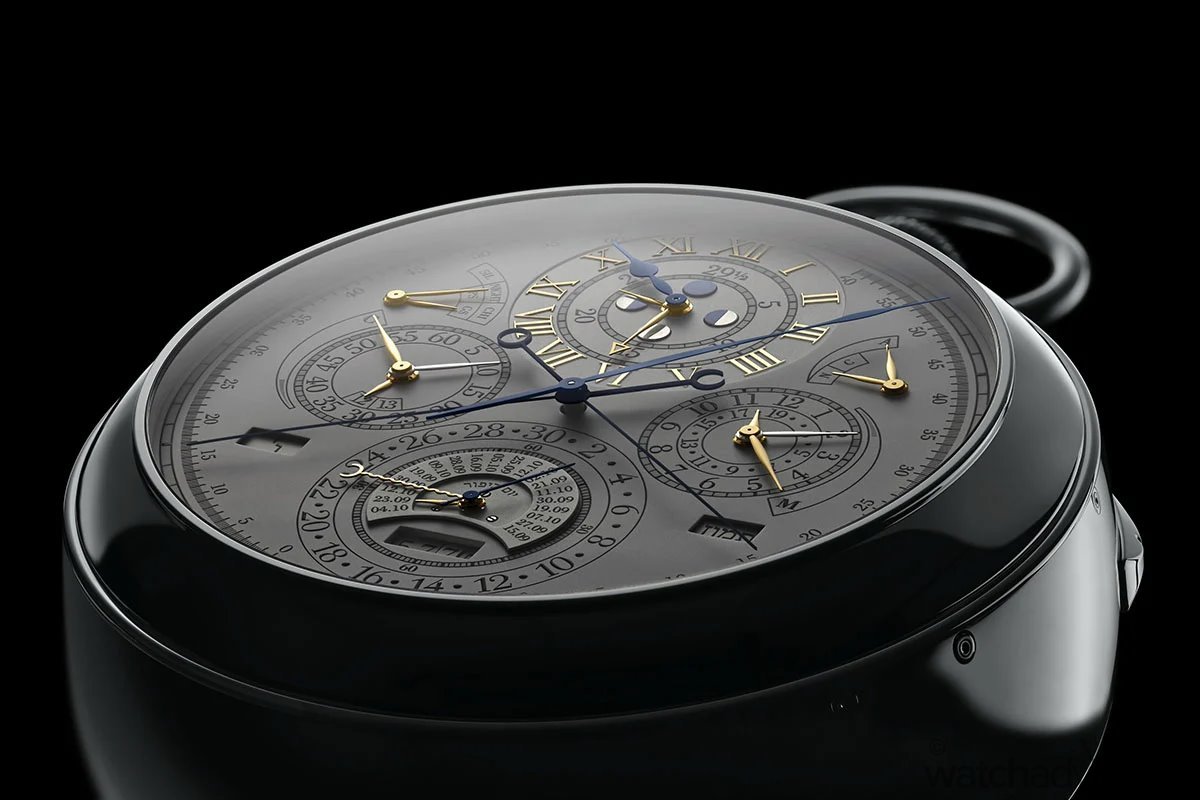
The Maison’s contributions to the world of horology are more than just designs and aesthetics. Vacheron Constantin has been a leader in movement innovation, with advancements in complications such as the pantograph system developed in the 19th century, creating record-breaking ultra-thin calibres like the legendary Calibre 1003 and displaying technical superiority with groundbreaking calibres such as the Grand Complication Ref. 57260, the most complicated watch ever made! Whether it’s the mastery of mechanical complications or creating ultra-thin timepieces, Vacheron Constantin has continued to push the limits of what is possible throughout this 270-year history.
The brand has created several celebrated collections while also producing icons that have stood the test of time. Collections like the Patrimony line showcase minimalistic elegance, and the Traditionalle collection honours the roots of traditional watchmaking, while the Historique collection breathes new life into the vintage and archived timepieces, showing Vacheron Constantin’s ability to connect the past with modernity. And then we have the Overseas collection, one of the most iconic for Vacheron Constantin which represents the brand’s take on luxury sports watches.
The Beginning of a Timeless Legacy
The story for Vacheron Constantin starts in 1755, when Jean-Marc Vacheron, a young watchmaker from Geneva, laid the foundation for one of the world’s most prestigious watchmaking houses. When Jean-Marc Vacheron was just 24 years old, he opened the first workshop in Geneva, a city that was well renowned for its watchmaking expertise. He had a clear goal in mind for Vacheron: to create timepieces that demonstrated the highest level of precision while also showcasing the art and beauty of horology. Jean-Marc Vacheron’s reputation quickly spread beyond the borders of Switzerland as his early creations that displayed quality and innovation truly stood out from the rest.
During the late 18th century, when the French Revolution unfolded and Europe underwent significant political and social changes, Vacheron flourished thanks to the thriving market for luxury goods among the European aristocracy. Jean-Marc Vacheron’s designs were loved not only by watch collectors but also by the wealthy and elite across the continent, which started an enduring legacy of fine craftsmanship. This started the brand’s commitment to precision and artistic excellence.
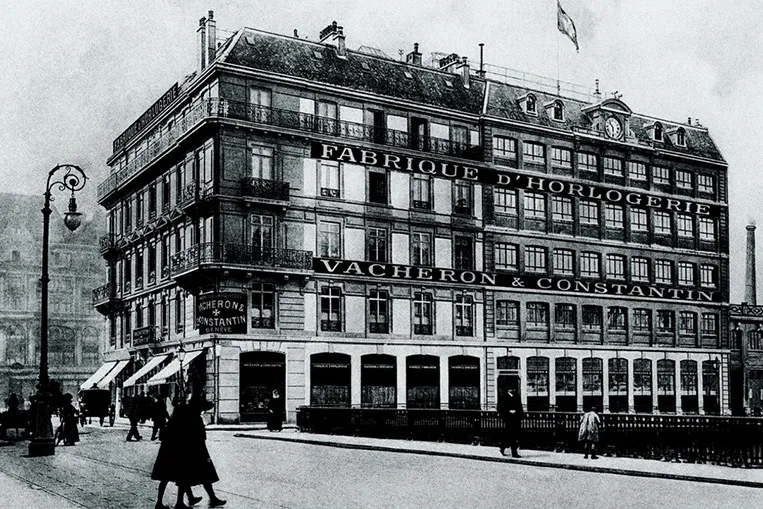
By the early 19th century, when Jacques Barthélémi Vacheron had taken over the leadership of Vacheron, the brand’s direction shifted when the partnership with François Constantin began, a visionary with an eye for business. The partnership would be the start of the brand we know today: Vacheron & Constantin. A name that would soon become synonymous with excellence in the world of horology, the pair expanded the company’s reach globally, attracting high-profile clientele and cementing its place at the forefront of the Swiss watchmaking industry.
In 2025, Vacheron Constantin is celebrating its 270th anniversary, an incredible testament to the brand’s enduring legacy. This spectacular milestone cements the brand’s status as one of the pillars of Swiss Watchmaking. This is true after all, as its is widely considered that Vacheron Constantin is part of the “holy trinity” in watchmaking, with the other two brands being Audemars Piguet and Patek Philippe.
To better understand the significance of Vacheron Constantin and the impact the Maison has had in the world of watchmaking, we must journey through its extraordinary history. From the very first pocket watches created by Jean-Marc Vacheron, the revolutionary timepeices that changed the course of horology to the innovative timepeices of the modern era, the timeline captures the defining moments of the brand that have made Vacheron Constantin the icon it is today!
1755 – Founding of Vacheron
The story of Vacheron begins with Jean-Marc Vacheron, a Genevan horologist who established his own workshop in Geneva, Switzerland. This marked the beginning of Vacheron Constantin, the world’s oldest manufacture that has been in continuous operation since 1755. Jean-Marc Vacheron’s pocket watches at the time naturally bore his name. At the time Vahceron was started, he was only 24 years old and was one of many “cabinotiers-watchmakers” who specialized in the production of certain components, selling them to establishers.
1755 – Earliest Pocket Watch by Jean-Marc Vacheron
In the very same year that Jean-Marc Vacheron founded his workshop in Geneva, he released a his earliest known pocket watch. This timepiece showcased Jean-Marc Vacheron’s exceptional watchmaking skills and attention to detail, with the pocket watch featuring intricate mechanisms that were advanced for its time. This silver pocket watch is the pride of Vacheron Constantin’s heritage and was signed J.M: Vacheron A GENEVE. Vacheron Constantin states this is the “only timepiece known that identifies the company’s founder by his first name.”
The pocket watch came fitted with a verge escapement and featured finely crafted hands in gold with both Roman and Arabic hour indices. The balance cock, the most visible part of the movement, also demonstrates high-grade workmanship in delicate arabesques. This timepiece not only demonstrated Vacheron’s technical and aesthetic prowess but also set a standard for the brand’s future innovations.
1770 – First Complication Made By Vacheron
Fifteen years after Jean-Marc Vacheron’s first pocket watch creation, the watchmaker unveiled a timepiece with it’s first complication. This was a watch with additional functions beyond simple timekeeping. This was also the very first timepiece in the world to feature a complication outside of time-only watches. This achievement showed early on the brand’s dedication to pushing the boundaries of watchmaking, integrating complications that not only enhanced the aesthetics of the watch but also the functionality.
1779 – Vacheron Creates Engine-Turned Dials
In 1779, Jean-Marc Vacheron was one of the pioneers (alongside Abraham-Louis Breguet) in pioneering a new aesthetic dial named guilloché. Vacheron designed the first engine-turned dial, which was a technique that involved engraving intricate patterns onto the watch dial, giving the dial a much more decorative and aesthetic allure.
1785 – Abraham Vacheron Manages Vacheron
In 1785, Jean-Marc Vacheron’s son, Abraham Vacheron, took over the managing of the workshops. Under Abraham’s guidance, the workshops continued to uphold the vision of Jean-Marc Vacheron and uphold the brand’s reputation for quality and innovation. His leadership was also during a time when the French Revolution was taking place and occupation of Geneva by the troops of the French Directory.
1810 – Jacques Barthélémi Vacheron Takes Leadership Of The Company
Following his father’s lead, Abraham Vacheron taught the watchmaker’s trade to his son, Jacques Barthélémi Vacheron, who took over the reins of the company in 1810. During this time, Vacheron produced more complicated timepieces than simple time-only pocket watches or chronograph pocket watches. Talented watchmakers at the Vacheron workshop crafted timepieces such as musical watches, ones that also played two different tunes! Jacques Barthélémi Vacheron also recognised the potential for growth outside the Swiss borders, so he decided to take the brand to the international stage by initiating the company’s exports to France and Italy.
1812 – Mastering The Art of Complications
During Jacques Barthélémi Vacheron’s management of Vacheron, the brand really started to hone in on mastering complications in pocket watches. One such complication is the quarter repeater. We know at this point in time that Vacheron was creating timepeices that were able to produce timepieces with two different sounds, which laid the foundations for creating the quarter-repeater complication. The quarter-repeater is a complication that, upon activation, chimes the hours and number of quarter hours that have passed since the last hour. The hour and quarter-hour use two different chimes to distinguish themselves apart. One of the earliest quarter-repeater timepieces from Vacheron features a white enamel dial with guilloché and engraved case back.
1819 – Partnership With François Constantin
With the company now doing well with the selection of timepieces and also venturing out to France and Italy, Jacques-Barthélemy Vacheron was seeking to expand Vacheron’s reach. In order to do so, he partnered up with François Constantin in 1819. This collaboration is what led to the formation of Vacheron et Constantin (or Vacheron & Constantin). François Constantin’s extensive travels and business mindset/experience made him the perfect ally in this new venture in broadening the brand’s global footprint, introducing Vacheron Constantin watches to the global market.
1819 – “Do Better If Possible And That Is Always Possible”
1819 was also the year in which Vacheron Constantin’s iconic motto, “Faire mieux si possible, ce qui est toujours possible,” translated to “Do better if possible, and that is always possible”, arose. The story goes that on July 5, 1819, François Constantin wrote to his new partner, Jacques Barthélémi Vacheron from Turin. His letter contained the phrase that would later become the company’s motto!
1824 – Early Watchmaking Craftmanship
In 1824, Vacheron & Constantin identified itself through exceptional watchmaking craftsmanship. The brand set a very high standard from the get-go in horological artistry by producing timepieces that combined technical precision with artistic design. One such watch was a pocket watch crafted in a yellow gold case, then exquisitely decorated with a map of Italy in blue champlevé enamels. The two-tone dial featured 12 Roman numerals ringed by a minutes scale along with small seconds at 6 o’clock position.
1833 – Georges-Auguste Leschot Joins Vacheron & Constantin
Georges-Auguste Leschot, an inventor and engineer, was hired by Vacheron & Constantin in 1833 to oversee the manufacturing operations. During his time there, Leschot introduced significant technological advancements, including the standardisation of watch movements into calibres. This revolutionised the watchmaking industry as a whole, as it enabled interchangeable parts, which ultimately led to more efficient production.
1839 – Georges-Auguste Leschot Invents the Pantograph
As mentioned before, Georges-Auguste Leschot’s time with Vacheron made significant progress for not only the brand but also the world of horology as a whole through his various inventions and ideas. One such invention was the Pantograph. This machine allowed the standard manufacture of parts and components, reducing the parts’ overall size. It also allowed for greater precision and consistency in watchmaking. The Pantograph earned Georges-Auguste Leschot a gold medal (prestigious Prix de la Rive) in 1844 by the Arts Society for “the discovery of the most value to the Genevese industry.”
1844 – Charles-César Vacheron Takes Over Vacheron & Constantin
In 1844 Jacques-Barthélémi Vacheron hands over the management of Vacheron & Constanstin to his son Charles-César Vacheron. His son is described as gifted, ambitious and energetic young man who accelerated the development process of the Manufacture. He also managed to increase Vacheron & Constantin’s international activity by conquering new markets such as China, Spain, India and Cuba!
1869 – Vacheron & Constantin Creates Award-Winning Pocket-Chronometers
During the 19th century, many European countries established chronometry competitions to encourage watchmakers to improve the performance of their timepieces for prestigious prizes, of course. Vacheron & Constantin entered into these competitions early on, winning the distinctions that inaugurated a century of records. One watch that won the chronometry competition, in particular, was in 1869 when Vacheron & Constantin entered a chronometer pocket watch in an 18k yellow gold case. The timepiece featured a beautiful white enamel dial with 11 Roman numerals and an external minute track, with a small second sub-counter at 6 o’clock as well.
1880 – Birth of The Maltese Cross Logo
1880 was the birth year of the Maltese Cross as a logo for Vacheron & Constantin. his symbol was inspired by a component within the watch movement that controls the mainspring’s tension, reflecting the brand’s mechanical ingenuity and commitment to quality.
1889 – Vacheron & Constantin Produces Its First Ladies Watch
The Maison produced its first ladies’ watch in 1889. Recognising the growing demand for women’s timepieces at the time, Vacheron & Constantin produced the first ladies’ watch that featured elegance alongside functionality. The timepiece was held by a delicately engraved and finely worked mounting, which was connected to a beautiful bracelet that featured two winged goddesses. The dial was done in white, which allowed the colour Arabic hour indices in blue and red to stand out. The dial was encircled with diamonds that glistened attractively!
1901 – Vacheron & Constantin Receives Geneva Hall Mark
1901 was a historic year for the brand. During this year, Vacheron & Constantin became one of the first watch manufacturers to receive the prestigious Geneva Hallmark (Poinçon de Genève). This certification was first established in 1886, and it guarantees the quality, precision and origin of Geneva-made watches. The further re-inforced Vacheron & Constantin reputation for craftsmanship and finishing at the highest level.
1906 – Vacheron & Constantin Presents Pocket-Watch in Cloisonne Enamel That Won Milan International Exhibition Grand Prix Awards
During the Milan International Exhibition in 1906, Vacheron & Constantin showcased an extraordinary pocket watch. This pocket watch was among a few timepieces that the Maison presented at the exhibition, but what made the pocket watch stand out was that it was yellow-gold with a back that featured a superbly executed pattern of thistles in cloisonné enamel. The dial of the pocket watch is two-toned silver and displays a finely hand-made guilloche finish at the centre. The decorative finishes of the timepiece represented the Genevan tradition, which was the epitome of sophistication.
1906 – Vacheron & Constantin’s First Boutique Opens
The Maison was no doubt getting a lot of traction now, and on the back of this, the expansion of its presence began with opening the first boutique on the ground floor of the Island building, in Geneva. As Vacheron & Constantin was getting orders from high-profile clients at the time, which included the likes of Queen Mary of Rumania, the brothers Henry and William James and Prince Napoleon, the grandson of Jerome Bonaparte, this new boutique presented the perfect location to display the luxury timepieces.
1907 – Vacheron & Constantin Presents First Ever Royal Chronometer Pocket-Watch
In 1907, Vacheron & Constantin presented a timepiece that was unlike any other at the time. The brand’s first-ever Royal Chronometer was presented and would go on to become an international hit. What made this timepiece stand out was its legendary toughness, reliability, and, of course, its accuracy. The timepiece was especially appreciated by owners who were in more harsher climates, a testament to the timepiece’s durability.
1912 – Vacheron Constantin Introduces The Tonneau Case Design Into Their Collections
Cartier was the first to design the tonneau case shape in 1906. and 6 years later, Vacheron & Constantin adopted it in to the watch design. This design was undoubtedly unique and broke away from the traditional round cases that were widely popular, offering a distinctive and elegant aesthetic that would undoubtedly influence watchmaking for decades. The tonneau shape was introduced into Vacheron & Constantin’s Malte collection.
1914/15 – “Le Tuyau” Movement Development
During 1914/1915, Vacheron & Constantin developed the Tuyau movement. This movement is special because it’s an engineering feat that enabled watchmakers to create unique and miniaturised timepieces. The Maison’s development of this movement would lay the groundwork for some exceptional timepieces, especially in the world of ultra-thin and small timepieces!
1916 – “Le Tuyau” Wristwatch Made For Maharaja of Patiala, Sir Bhupinder Singh
With “Le Tuyau” movement being developed for production a year prior, Vacheron & Constantin showcases this movement in a curved version made for a lady’s bracelet. This unique piece was acquired by the Maharaja of Patiala, Sir Bhupinder Singh, one of India’s most affluent rulers. The timepiece was made of gold and featured diamonds. But what also made it stand out was the beauty of the engraved work on the bracelet. The movement was placed on a curved rectangular baseplate, which allowed the time to be read in profile.
1918 – Vacheron & Constantin Creates ClockWatch for James Ward Packard
Renowned American automobile magnate and collector James Ward Packard commissioned a special clock watch from Vacheron & Constantin in 1918. The pocket watch made for Packard featured an exceptionally complex mechanism underneath the beautifully crafted aesthetic exterior. The clockwatch rings the hours and quarters in passing in the grand strike mode, while the small strike omits the hours at each quarter. In addition to this, the clockwatch also strikes the half-quarters. Other features of the watch include Guillaume compensation balance, a rock-crystal glass and a 20-carat gold engraved case with the owner’s monogram in blue enamel on the back.
1921 – Vacheron & Constantin Introduces The American 1921
An iconic Vacheron & Constantin collection was released in 1921, the American 1921. This was certainly an avant-garde timepiece with its unique time display. The wristwatch in a cushion case was actually produced in secret for the American market, according to Vacheron Constantin. This timepiece is kept in the theme of the “adventurous spirit” of the 1920s as it features a dial that is “slanted” or angled, which means that it’s easy to tell the time on the wrist at a quick glance. The white enamel dial features 11 Arabic hour indices along with a heart-shaped hour hand and a small-second counter at 6 o’clock.
1929 – A Grand Complication timepiece as produced for King Fouad
In 1929, Vacheron & Constantin produced an incredible grand complication pocket watch for King Fouad I of Eygpt. The Grand Complication Pocket Watch came with a chronograph, a perpetual calendar, a minute-repeater and a grand/small-strike clockwatch, in what is still seen today as a masterstroke of high horology. The case back of the pocket watch came with royal arms made of enamel. The silver dial with 10 Arabic numerals in black, an aperture for the day and date at 12 o’clock, a subdial for the month and year at 9 o’clock, a 30-minute counter at 3 o’clock and the age and phases of the moon with the small seconds at 6 o’clock.
1932 – Vacheron & Constantin Collaborates With Mr Cottier To Create World First Ref. 3372 World Time Watch With 31 Timezones
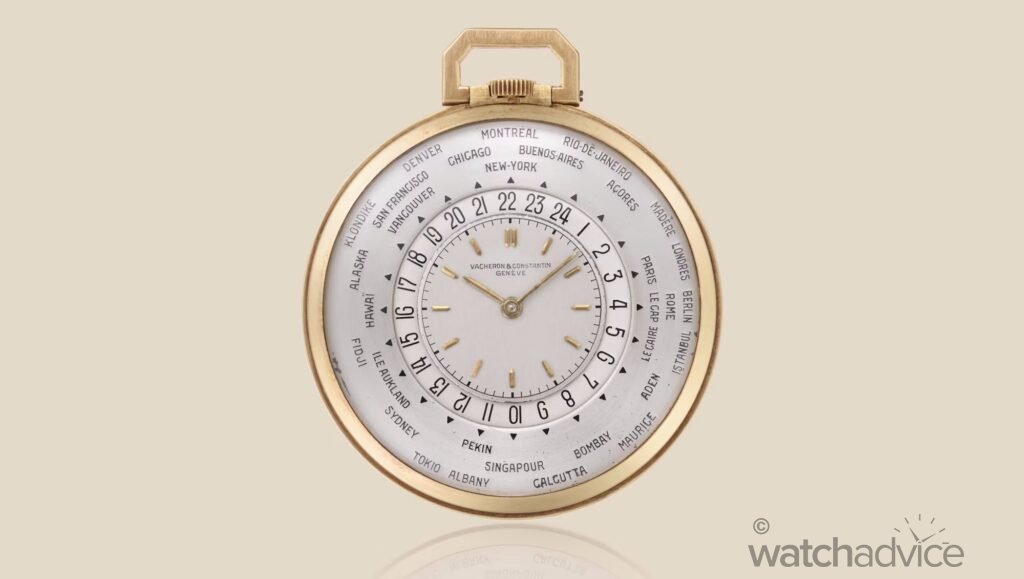
On the back of creating the most complex Vacheron & Constantin timepiece with the grand complicaiton pocket watch in 1929, the brand kept pushing the boundaries of watchmaking by collaborating with legendary watchmaker Louis Cottier to develop the world’s first reference. 3372 world time watch, which featured 31 time zones! The unique mechanical movement displays 24 time zones using a disc that rotates around the central dial, while the external bezel is inscribed with the names of the 31 major world cities. The Maison states “It was the first-born of a useful complication still present in our offer today.”
1936 – The Great Depression and Charles Constantin Becomes Head of Vacheron & Constantin
This period in time was difficult for the Swiss watchmaker due to the Great Depression. In saying that however, the brand kept pushing forward and releasing incredible timepieces as can be seen, regardless of the difficult situation surrounding the company. This was also the year that Charles Constantin became the head of the company, a first in Vacheron & Constantin’s history that a representative from the Constantin family is running the business. A year later, in 1940, however, Georges Ketterer acquired the majority portion of the stock of Vacheron & Constantin from Charles Constantin.
1943 – Vacheron & Constantin Unveils “4293” Timepiece
Another highly complicated timepiece released by the Maison was the “4293” watch. This wristwatch featured a 38 mm pink gold case, with the complications including a minute repeater and a triple calendar with moon phase indication. Vacheron & Constantin state “This piece is the perfect blend of the emblematic Vacheron Constantin design of the 1940s, especially with its droplet-shaped horns, with a high level of technical watchmaking skill, expressed through the exceptional caliber.”
1946 – Vacheron & Constantin Creates Most Complicated Timepiece for King Farouk
Innovation was soaring through the brand’s veins at this point, having released three major timepieces that were not only innovative but also leaving a mark on the history pages of horology; Vacheron & Constantin weren’t about to stop any time soon. In 1946, the brand “one-upped” their previous “most complicated” timepiece by creating another grand complication watch, this time for King Farouk, son of King Fuad I of Egypt. This ultra-complicated pocket watch took five years to complete, with a total of 14 complications present on the timepiece.
1955 – 200th Anniversary of Vacheron & Constantin
The year 1955 was a momentous occasion for Vacheron & Constantin as they celebrated their 200th anniversary. Only a handful of brands can say they have continuously operated for 200 years! This milestone certainly reflected the brand’s enduring commitment to craftsmanship, innovation, and timeless design. In honour of this special occasion, the brand released several iconic collections alongside new innovations.
1955 – The Maison Releases Thinnest Ever Manually Wound Movement: Calibre 1003
One such innovation unveiled by Vacheron & Constantin for their 200th anniversary celebrations was this ultra-thin wristwatch. Alongside this ultra-thin watch was the thinnest ever manually wound movement; at 1.64mm, it is as thin as a Swiss 20-cent coin. The Calibre 1003, today bearing the Hallmark of Geneva, has become representative of ultra-thin movements.
1955 – Vacheron & Constantin Releases Chronomètre Royal Timepiece
This timepiece features stunning horned lugs on the case and a yellow-gold case with anti-magnetic properties. The movement sitting inside carries a column-wheel chronograph with an elapsed time counter. The dial itself displays a 30-minute counter at 3 o’clock and a small seconds counter at 9 o’clock, giving perfect symmetry and balance to the aesthetic design of the timepiece.
1956 – The Maison Releases Unique Yet Elegant Model 6073 Timepiece
The elegant model 6073 released by Vacheron & Constantin in 1956 is a testimony of the Maison’s creativity and watchmaking sophistication in the 1950s. With a round audacious case with a unique lug design (each lug was a part of the Maltese Cross!) and a classic white dial with sharp and refined hour indices and hands, the timepiece looked simple yet was “more than meets the eye.” This model laid the groundwork for future designs and remains a significant part of the brand’s mid-century horological advancements.
1969 – Jacques Ketterer Is The Head of Vacheron & Constantin
With George Ketterer owning the majority of the stock of Vacheron & Constantin, he was effectively in charge of the business. When George Ketterer passed away in 1969, Vacheron & Constantin was handed down to Jacques Ketterer, who succeded as the head of the business.
1970 – Vacheron Constantin Gets Rebrand By Losing “&” From Name.
In 1980, Vacheron Constantin went through a slight rebranding, where they dropped the “et” or “&” from the name. From this point forward, as seen on the watch dials as well, the brand was simply Vacheron Constantin. The name change modernized the brand’s image while maintaining its historic identity.
1972 – Vacheron Constantin Creates a Unique “1972” Timepiece With an Asymmetrical Curved Case and Oval Movement
Vacheron Constantin were no strangers to uniquely designed timepieces. The avant-garde 1972 model was a perfect testament to this, featuring a asymmetrical, curved case and a oval movement. This design demonstrated the Maison’s ability to push past creative boundaries, while maintaining precision and craftsmanship. It is stated that “In June 1972, the French government awards Vacheron Constantin the rare and coveted Diplôme du Prestige de la France. Vacheron Constantin thus became the first watchmaking company to win such an honour.”
1977 – Vacheron Constantin Introduces The 222 Timepiece
One of the most iconic years in Vacheron Consantin’s historical timeline has to be 1977. It was when the brand released a timepiece that was such a departure from Maison’s previous design language that they wouldn’t be at fault for thinking it was the timepiece made by them! This timepiece was released in the era of the historic Audemars Piguet Royal Oak, where the steel sports watch first introduced itself on a grand scale. Jörg Hysek, a then-young designer who had just ventured out on his own after working at Rolex designed the 222, aptly named after the brand’s 222nd anniversary in 1977.
The Vacheron Constantin 222 featured a monobloc case on a fitted bracelet that has a porthole-style screw-held bezel providing resistance to hard wear in a harsh environment. The uniqueness of the design of the 222 made it iconic almost immediately, making it one of the most recognizable Vacheron Constantin designs, inspiring future lines like the Overseas collection.
1979 – The Maison Unveils The Kallista Model
Vacheron Constantin in 1979 released one of the most stunning and dazzling horological creations. Named the Kallista model (Greek for “most beautiful”) and rightly so, the timepiece was carved out of a one-kilo gold ingot and set with 118 diamonds totalling an incredible 130 carats. The Maison states “It took five years to match all the emerald-cut diamonds and more than 6,000 hours of work to complete the masterpiece.”
1992 – The Maison Introduces The World’s Thinnest Minute-Repeater With Calibre 1755
In 1992, Vacheron Constantin introduced the world’s thinnest minute-repeater. With vast experience already in creating ultra-thin movements, the brand created a minute-repeater in a similar style to what it was producing in the 1940s, except this time in an ultra-thin scale. The Calibre 1755 became the world’s thinnest minute-repeater, measuring in at only 3.28mm thick. This is a remarkable feat of engineering that is still admired to this day.
1994 – The Maison Unveils Mercator Collection As Tribute To Flemish Mathematician and Geographer Gerhard Kermer
Gerhard Kermer (known as Mercator) was a Flemish mathematician and geographer who was famous for being the first to draw flat projections of the globe for navigators. Mercator resonated with Vacheron Constantin, as travelling has been a major recurring theme with the Maison. So, on the 400th anniversary of the cartographer’s death, Vacheron Constantin unveiled a collection as a tribute to Mercator. The dials were beautifully decorated with enamel paintings depicting different maps of the hemispheres drawn by Mercator himself. Another nice touch was the retrograde hands for the hours and minutes indications, which look like dividers.
1996 – Acquisition by Richemont Group
1996 was a big year for Vacheron Constantin, with firstly the acquisition by Richemont Group and then the release of an iconic collection. The leading luxury conglomerate, Richmont Group, bought out Vacheron Constantin in a likely move that was aimed at strengthening Richmont’s luxury watch portfolio, with the brand acquiring other watch manufacturers like IWC Schaffhausen, Jaeger-LeCoultre and Piaget. Leading up to the acquisition by Richmont Group, Vacheron Constantin was already facing hardship during the 1970s -1980s due to the Quartz crisis. When Jacques Ketterer passed away in 1987, Vacheron Constantin changed hands to Sheik Ahmed Zaki Yamani, the former Oil Minister of Saudi Arabia (also an avid watch collector). A decade plus later, the business was bought out by Richmont Group.
1996 – Birth of Overseas Collection
As mentioned previously, this was a big year for Vacheron Constantin, with the major shuffle in owners. While all that was happening in the background, the watchmaker didn’t stop producing incredible timepieces. 1996 is the birth year of the famous and iconic Overseas collection, with which Vacheron Constantin embraces the technical and sports side of fine watchmaking. The timepiece’s design, with its unique bezel design inspired by the Maltese Cross, features clean lines and a naturally elegant and luxurious appeal while imbued with the contemporary theme of travel that Vacheron Constantin is renowned for. The collection has since become a key pillar of the brand.
2001 – Vacheron Constantin Wins Very First Grand Prix d’Horlogerie de Genève (GPHG) With Lady Kalla Timepiece
Almost three decades after the release of the high-jewellery Kallista model timepiece, Vacheron Constantin unveils the next exquisite high-jewellery piece: The Lady Kalla. This is an opulent jewellery watch set with diamonds from head-to-toe. The case, bracelet and dial are fitted with baguette-shaped diamonds, making it appear more like a diamond bracelet rather than a watch. Don’t let that fool you, however, as the timepiece features a miniature movement that displays the time on the dial. In recognition of creating this incredible timepiece, Vacheron Constantin won the “Aiguille d’Or” – the very first Grand Prix d’Horlogerie de Genève. This victory reinforced the brand’s expertise in combining haute horlogerie with high jewellery craftsmanship.
2004 – Vacheron Constantin Unviels Patrimony Collection
With the acquisition by Richmont Group, we now start to see the brand progress commercially on a quicker and grander scale. Almost a decade after the release of Vacheron Constantin’s iconic Overseas collection, the brand produces another pillar of watchmaking: the Patrimony collection. This collection was designed with circular perfection in mind, keeping only the essentials while still remaining elegant and true to Vacheron Constantin’s styling. To retain the brand’s heritage, the Maison took design inspiration from their 1950s timepieces. The collection has a minimalistic look with a beautiful balance between taut lines and curves combined with slender cases that just exude elegance.
2004 – Vacheron Constantin Gets New Headquarters
On August 9, 2004, Vacheron Constantin opened its new Factory in Plan‑les-Ouates, Geneva. Bernard Tschumi specifically designed the headquarters for Vacheron Constantin. The building is noted for its architectural significance, as it was designed in the shape of a stylised Maltese cross cut in half. The new headquarters brings together the management, administration and the workshops under the same roof.
2005 – Vacheron Constantin Celebrates 250th Anniversary
2005 marked the 250th anniversary of the Vacheron Constantin and its spectacular history. To commemorate its quarter-millennium anniversary, Vacheron Constantin launched a collection of five outstanding creations that pay tribute to all the crafts involved in the Maison art of watchmaking. One of the stand-out releases of this year was the Tour de l’Île watch. This is the most complicated watch ever made, with 16 complications. The Grand Prix d’Horlogerie de Genève awarded the “Aiguille d’Or” Grand Prize to Vacheron Constantin’s Tour de l’Île watch.
2005 – Vacheron Constantin Introduces Limited-Edition Jubilé 1755 Wristwatch
As part of the 250th anniversary celebrations, Vacheron Constantin introduced another masterpiece creation: the limited-edition Jubilé 1755 wristwatch. This signature timepiece features a timeless classic aesthetic with a subtly guilloché dial. Vacheron Constantin states “The authorities of the canton of Geneva recognized the importance of this jubilee, granting Vacheron Constantin a special exemption to display the prestigious Geneva Seal crest on the dial, one of the industry’s most demanding certifications, marking a historic and unprecedented moment for the brand.”
2007 – Vacheron Constantin Presents The Métiers d’Art Les Masques Collection
In 2007, the Maison presented a unique collection: The Métiers d’Art Les Masques. This collection was a long journey that took its master watchmakers through time and space, in search of humanity’s very roots and a reflection on one of the most beautiful expressions of the human soul. The result of this search was that twelve masks were selected from the Barbier-Mueller collection to then be reproduced in gold for the timepieces. The masks sit in the centre of the dial, reflecting not only the history of Vacheron Constantin, but also the openness of the world.
2015 – Vacheron Constantin Unveils Reference 57260 For 260th Anniversary
After releasing the most complicated watch in the world, Tour de l’Île watch, for the brand’s 250th anniversary, Vacheron Constantin one-upped themselves again by unveiling the Reference 57260, the most complicated watch in the world, to date. It will undoubtedly be near impossible to take this title away from Reference 57260 as the timepiece features a total of 57 complications. A passionate collector commissioned the pocket watch and took over 8 years to design and manufacture! The Grand Prix de l’Horlogerie de Genève awarded the Jury’s Prize to Vacheron Constantin’s 57260.
2017 – The Maison Unveils Celestia Astronomical Grand Complication
Two years after the record-breaking release of the Reference 57260 complication pocket watch, Vacheron Constantin unveiled the Les Cabinotiers Celestia Astronomical Grand Complication 3600. While its not as “complicated” as Reference 57620, this is still an exceptional timepiece by its own right. Vacheron Constantin state “Its caliber 3600, a mechanical manual-winding movement comprising 23 complications also includes three distinct times driven by three dedicated gear trains. A three-week power reserve is ensured by six barrels coupled with three. The Grand Prix d’Horlogerie de Genève has awarded the Mechanical Exception Watch Prize to Vacheron Constantin’s Les Cabinotiers Celestia Astronomical Grand Complication 3600.”
2018 – The Maison Introduces Fiftysix Timepiece
In 2018, Vacheron Constantin introduced a new collection of watches called “FiftySix”. Why the name FiftySix? The timepeices in this collection take design references from an iconic timepiece that was released in 1956 by Vacheron Constantin. This new collection has modern, elegant, and relaxed styling, while the personality of the timepiece is expressed through the difference in the classic dial and the more unique and daring case design. Vacheron Constantin’s Maltese Cross plays an important role in the inspiration behind the case design.
2019 – Vacheron Constantin Unveils Traditionnelle Twin Beat Perpetual Calendar
A masterpiece in high horology, Vacheron Constantin’s Traditionnelle Twin Beat Perpetual Calendar, released in 2019, is a feat of technical prowess that uses a patent-pending mechanical system that allows instant switching between high-frequency Active mode (5Hz – 36,000 VpH) and low-frequency Standby Mode (1.2Hz – 8,640 VpH). If that wasn’t impressive enough, another technical marvel of this timepiece is that it has an extended power reserve of an astonishing 65 days!
2020 – Vacheron Constantin Releases New Collection, Égérie, Dedicated to Women
A brand new collection dedicated to women was released in 2020. Vacheron Constantin’s Égérie collection is an encounter of two worlds: Haute Horlogerie and Haute Couture. Watchmaking femininity, according to Vacheron Constantin,n is brought forward to the modern age with the Égérie collection. This was also the first time in a while that Vacheron Constantin created a women’s collection from the ground up. The timepieces featured an off-centred date or moon phase display set in elegant, diamond-studded cases.
2022 – Vacheron Constantin Re-Introduces Iconic 222 In Gold As Historique 222 Ref. 4200H
In 2022, during Watches & Wonders in Geneva, Vacheron Constantin was the talk of the town as they unveiled a re-issue of one of their most iconic timepieces, the 222. Released in 1977 as part of the brand’s 222n’d anniversary, this new Vacheron Constantin Historiques 222 takes the original 222 and makes it modern. The iconic styling and design are kept intact, of course, however modern changes are applied as expected, such as Vacheron Constantin’s modern movement and the use of 18k 3N yellow gold for the case.
2025 – 270th Anniversary of Vacheron Constantin
2025 marks a special occasion, the year the brand celebrates its incredible 270th anniversary! For the brand’s momentous 270th anniversary, we can possibly see them release multiple limited editions that showcase its vast history and experience, such as updates to the Traditionnelle, Patrimony and Overseas collections. The brand has already started the 270th celebrations by releasing the Hisotrique 222 in steel, a contemporary reissue of a historic 1970s model!
A Legacy That Stands The Test Of Time
As Vacheron Constantin celebrates its 270th anniversary this year, its remarkable legacy stands as a testament to centuries of unwavering craftsmanship, technical mastery and artistic innovation. From the early days of Jean-Marc Vacheron creating pocket watches that were ahead of their time to engine-turned dials to the now modern pioneering achievements in haute horology, Vacheron Constantin has consistently pushed the boundaries of watchmaking!
With a rich history full of groundbreaking complications, elegant designs and a relentless pursuit of excellence, the Maison remains a pillar of tradition and innovation. As it embarks on the next chapter of its journey and inching ever so close to the unbelievable 300-year mark, one thing is for certain: its commitment to “Do better if possible, and that is always possible” will continue to shape the future of fine watchmaking for generations to come.


